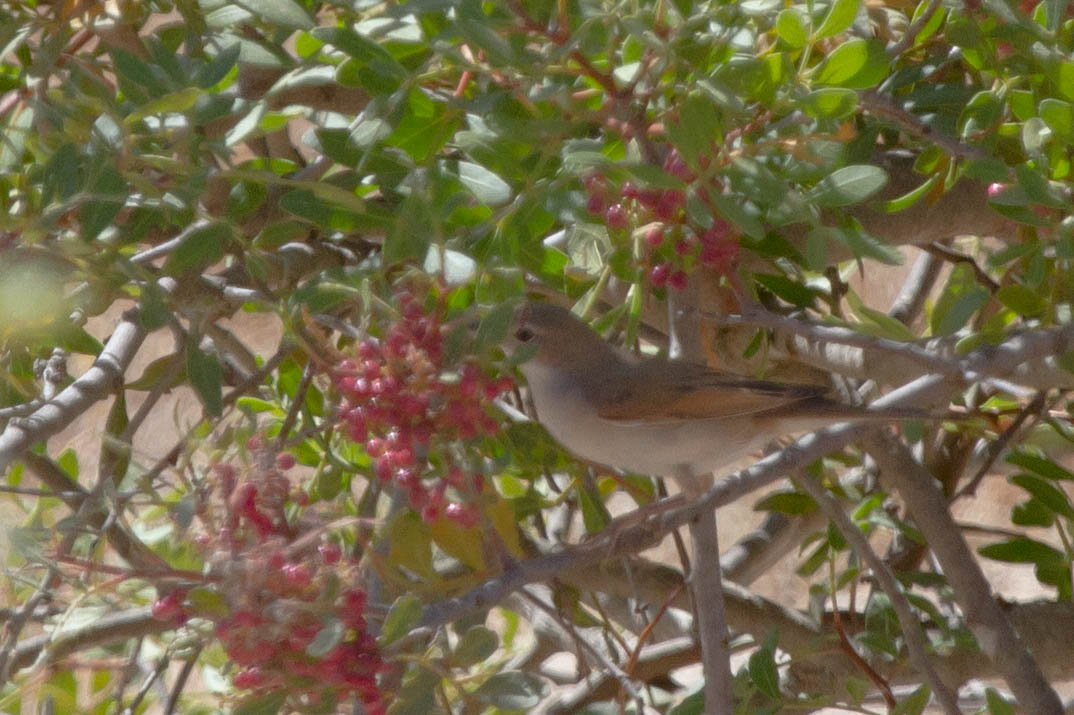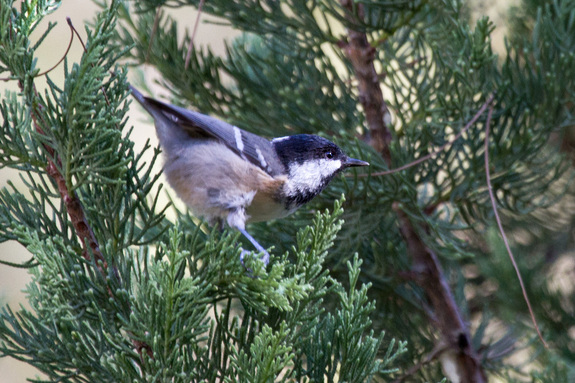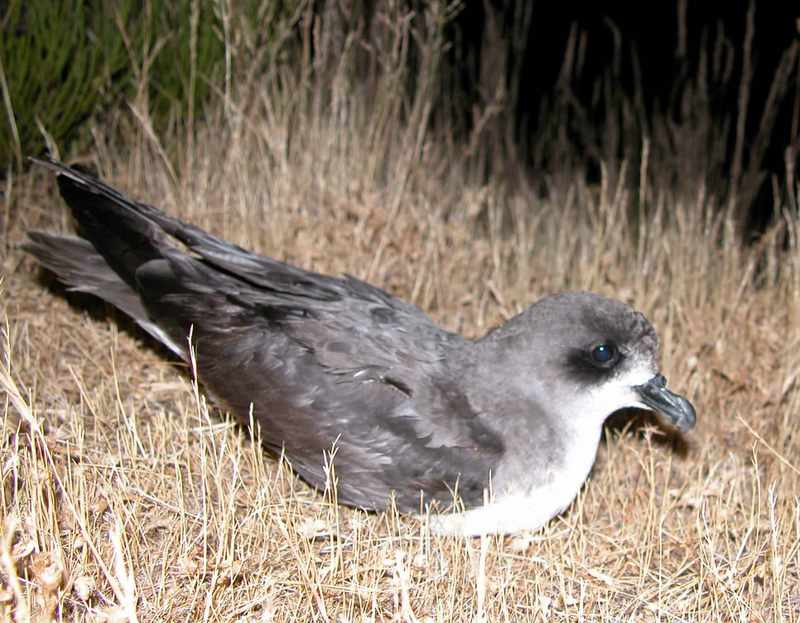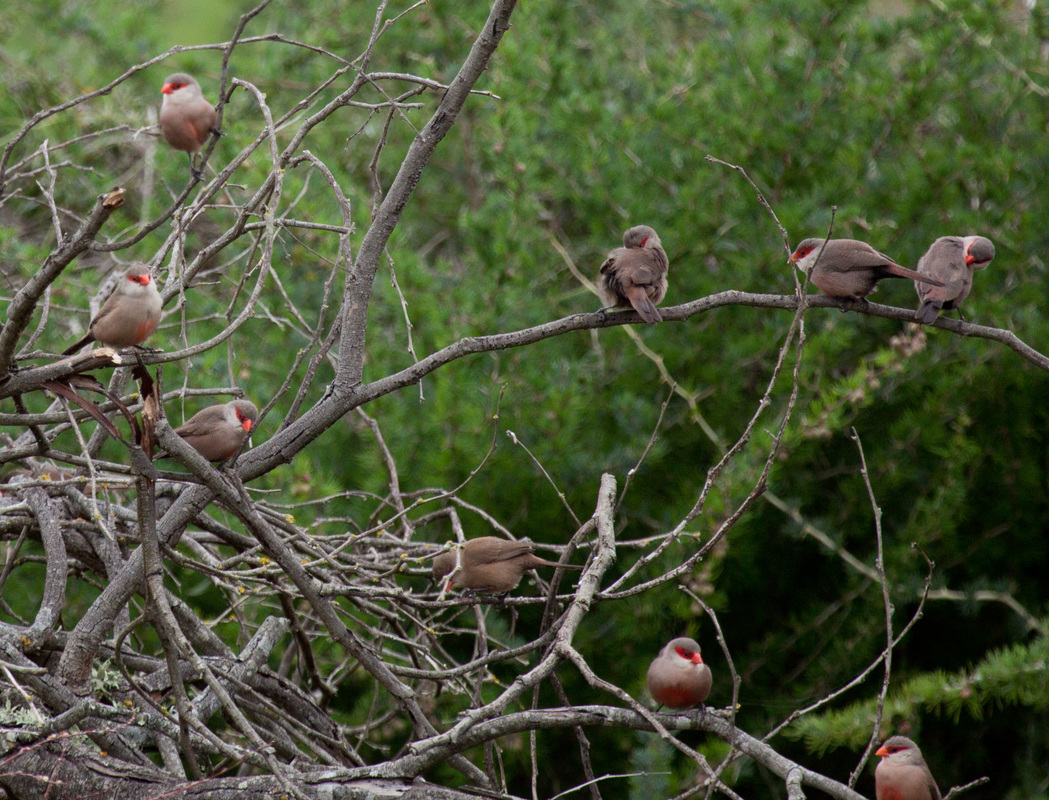|
20 October 2014
Charca de Suarez - again!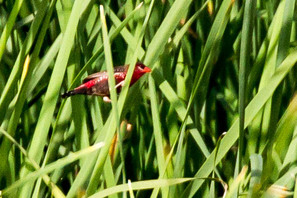 Male Red Avadavat (Amandava amandava) Male Red Avadavat (Amandava amandava)
The monthly meeting of the Axarquia Bird Group was held at the Rio Velez in Torre del Mar and attended by 19 members. A very pleasant morning even if somewhat devoid of the expected birds - but we did have a couple of Night Herons.
Then, yesterday Sunday 19 October, I was back at the Charca de Suarez with a couple of birding holiday makers and we had numerous sightings of the resident Red Avadavats. In addition, t was good to see the little green frogs on the reed stems (Mediterranean Tree Frog) which suggests that the site might be healthy and will certainly encourage all those various members of the heron family to return in good numbers. Reports of both have now been published on the blog with accompanying photographs. Charca de Suarez with the Axarquia Bird Group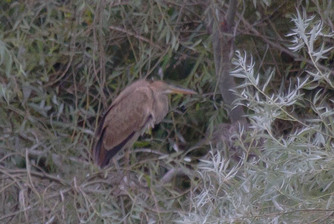 Distant juvenile Purple Heron (Ardea purpurea) Distant juvenile Purple Heron (Ardea purpurea)
A very pleasant morning's birding with the Axarquia Bird Group at the Charca de Suarez, Motril on Monday 1 October. Calm, cloudy weather to welcome the nineteen members and over forty species recorded including a juvenile Purple Heron, Little Bittern, numerous Kingfisher sightings along with Marsh Harrier and a range of waders including both Ruff and Curlew Sandpiper. Many of the group also recorded their first sighting of the little Red Avadavat, now in full breeding plumage ready for the start of their breeding season later this month. See the BLOG for a full report.
Laguna Dulce and Fuente de Piedra
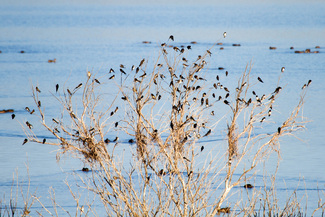
Great morning at Laguna Dulce and Fuente de Piedra on Sunday even if the temperature started hot and got hotter as the morning progressed. Still plenty of water at the Dulce and a good range of birds with the highlight, perhaps, being the newly-arrived Curlew Sandpipers, Ruff, Snipe and the first Pied Flycatcher for many a month as they start their autumn migration back to Africa.
And we must not forget the large number of hirrundines that, thanks to my arriving early, were mainly still roosting in the trees in front of me. Mainly Barn Swallows and Sand Martins but also a few House Martins and a couple of Red-rumped Swallows. The late Common Swifts were a bonus. Meanwhile, the White-headed Duck population has build up to at least 150 with, no doubt, many more to come if the water levels hold. A couple of Great Crested Grebes werre also present to support the good numbers of both Little and Black-necked Grebes. Over at Fuente de Piedra the main laguna had dried up completely but there was plenty of thick, green water in the lagunetta at the back of the Visitors Centre. Most of the usual here but it was good to find a few Whitethroats busy feeding up for their coming migration along with both Sardinian and Subalpine Warblers and a single Great Reed Warbler. The Montes de Malaga
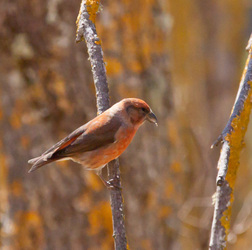 Male Crossbill (Loxia curvirostra) Male Crossbill (Loxia curvirostra)
Amidst this prolonged hot, dry spell the Andalucia Bird Society ventured forth to the Monte de Malaga for its August field visit. A very pleasant extended morning was had by all with, for the most part, walking in the shade of the trees. Somewhat to be expected, not a lot of birds to be seen but, nevertheless, good to catch up on many Crossbills, Coal Tits and Chaffinches along with Great Tit, Crested Tit, Longtailed Tit, Firecrest, Short-toed treecreeper and Nuthatch amongst others. Above a passage of mainly Common Swifts with a few Pallid Swifts for company in addition to the local Barn Swallows, House Martins and Red-rumped Swallows. Raptors ncluded Short-toed Eagle, Booted Eagle, Buzzard and Kestrel along with a dozen or so migrating Black Kites. And, of course, we must not forget the trio of Great Spotted Woodpeckers and the single Spotted Flycatcher.
The British Birdfair & Laguna Dulce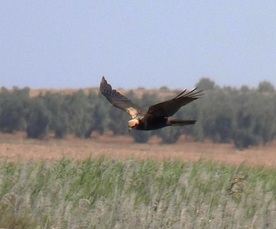 Quartering Marsh Harrier by John Wainwright Quartering Marsh Harrier by John Wainwright
Just back from the British Birdfair at Ruland Water (15-17 August) where the number of visitors was simply heaving. If this was kept up for all three days then, I am sure, the whole annual event will once again have been a major success and much needed funds raied to support a number of very derving bird causes.
Meanwhile, as I was travelling back to Spain yesterday, John and Jenny Wainwright were ignoring the continuing heat wave to journey over to the Laguna Dulce near Campillos to find some good birds along with a single species dragonfly and damselfly plus a trio of Otters. Rio Velez, Torred del Mar: Abused or vandalised?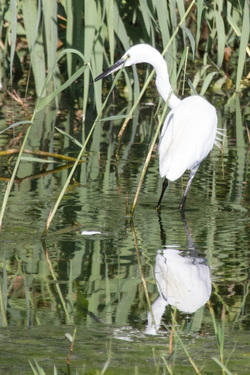
The riverside still looks quite lush with all the green vegetation growth but there is very little water upstream from the beach-side lagoon. A couple of large, somewhat stagnant pools and just the occasional glimpse of water that actually looked fit to drink, for the birds and animals. The bamboo has put on tremendous growth this year and, coupled with the riverside vegetation mentioned above, looking at the river has become impossible for long stretches of the walk down tot he pumping station. The latter is where, no doubt at great public expense, a hide and facilities were erected less than twelve months ago. Obviously, it would seem, the expense was in the provision and not the following maintenance. The lovely wooden racks provided to encourage cyclists to dismount and make use of the hide to observe the local wildlife have gone. Were they removed to be placed elsewhere or has some individual either done the same of taken them away as firewood? The two wooden seats are still present , presumably because they are fixed to the concrete base, but one is now submerged in the growing vegetation.
And then there is the hide itself. A typical three-sided hide (no back at the entrance side) with no glass in the windows and solid benches fixed to the floor you would think it would be safe from vandalism. Yes and no. Look through the window and you can see where very many visitors have simply thrown their empty paper and plastic bags along with tins and bottles. Inside there is also paper on the floor and it is then that you realise that is tissues used to wipe backsides and on the seat itself two human faeces (I refrain from using the vernacular much as I am tempted) where the ignorant, inconsiderate user has used the bench as a toilet seat. Even worse, the suspicious stains further on suggest that this is a regular practise. Why do we bother to erect these facilities to see them so violently abused? For we birders, in many ways the hide is in the wrong place and we would, in any case, have stopped here to look over the meadow, river and distant lagoon using the slight elevation to our advantage. Now you will see why I spent far less time than I had intended at the river this morning. But what about the birds themselves? Again, probably due to the heat, there were far less than on my last visit. I was welcomed by a single Collared Dove on the wires where on the last occasion I had seen a pair of Turtle Doves. Down below me a Common Sandpiper foraged on the muddy edge of the water and so revealed the first Little Egret along with a handful of well-grown juvenile Mallards. Even a lone Moorhen ventured out from the undergrowth. Also in the trees were four bright green Monk Parakeets that had just arrived and at the tops of the same some of the resident Rock Doves. As I prepared to walk down the track a White Wagtail walked across the green "slime" disturbing another Common Sandpiper and the first Little Ringed Plover of the morning. Only limited opportunities to actually see the river as I walked down but there were a few more Little Ringed Plovers to be seen along with another Little Egret. A small flock of Spotless Starlings were occupying the top of the next pylon and a couple of young Serin were feeding on the track in front of me. Indeed, Serins were to be the birds of the morning for a soon as I reached the hide and could look out over the meadow family parties seemed to be everywhere, well outnumbering the few House Sparrows present. Above me just the occasional visit from a Barn Swallow but then a family of Red-rumped Swallows decided that it was time to go off in search of food. Whilst at the hide I also had a visit form both a Zitting Cisticola and a rather lovely juvenile Woodchat Shrike. Very little to be seen on the lagoon save for a single Coot and a handful of Yellow-legged Gulls accompanied by a single Black-headed Gull. A look through a gap at the river revealed both a male Blackbird and a feeding Blue-headed Wagtail whilst, a little further on, I came across one of the pair of Black-winged Stilts that had flown upstream from opposite the hide. Occasional glimpses of the river did also produce more Little Ringed Plovers and Common Sandpipers along with a single Green Sandpiper. A little further on and a pair of Spotted Flycatchers crossed the track in front of me to land on a bamboo fern revealing a youngster begging Mum for some food. And that was just about it with a total of 26 species including the two seen on the way down to the Rio Velez. Now it would seem I am on my way back to a wet Britain! Three days in Cadiz & Sevilla Osprey (Aguila Pescadora) Osprey (Aguila Pescadora)
A fabulous week-end's birding with Steve and Elena Powell which saw us off down to Tarifa on Friday 4 October, followed by La Janda and travelling back towards Los lances beach via Barbate for our first night. Saturday we were off to Bonanza on the eastern bank of the Guadalquivir beyond Cadiz and then back into Sevilla Province for the afternoon at the Braza del Este. A second overnight stop west of Osuna and then the Sunday spent on the "circuit" to the west of Osuna and a final call at both Laguna Dulce and Fuente de Piedra before heading home. The three days produced a total of 11 raptors and all the members of the heron family save for the Great White Egret which, as yet, has probably nor arrived back in the area.
The final count shows that we recorded 104 species and the "jury is out" on another! The full account is now available on the blog (CLICK HERE). Embalse Bermejales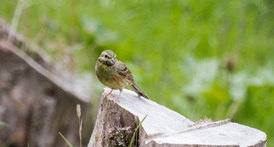 Cirl Bunting (Emberiza cirlus) Cirl Bunting (Emberiza cirlus)
Great morning's birding with Steve & Elena Powell which also took in the picnic area above Alcaucin on the journey home. The latter not only produced the expected Crossbills but also a couple of fleeting glimpses of Hawfinch and a trio of Cirl Buntings. Whilst at the Bermejales we managed to record four tit species, Short-toed Treecreper and a range of finches along with both flycatchers.
Visit to La Janda, Cadiz Province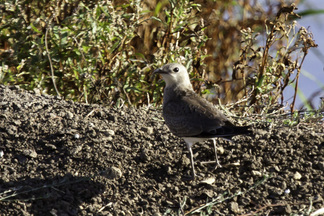 Juvenile Collared Pratincole (Glareola pratincola) Juvenile Collared Pratincole (Glareola pratincola)
An overnight stay on Friday 20 November so that we could participate in the monthly field visit of the Andalucía Bird Society meant that we had a very good birding experience in lovely company despite the very strong winds that somewhat ruined the raptor migration experience at Tarifa. Notwithstanding, we recorded eleven raptors including Griffon Vulture, Montagu's Harrier, Sparrowhawk and a Honey Buzard plus a range of water birds and LBJs in La Janda. No doubt about the best sightings; the Jack Snipe and very close views of a juvenile Collared Pratincole.
Charca de Suarez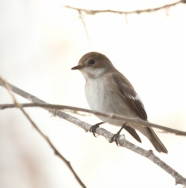 Pied Flycatcher
A short evening visit to this site on the western outskirts of Mortril accompanied by Steve Powell, Gerry Collins and Louise Gray produced much of the usual including many Common Coots and Mallards. Both Purple Swamphen and a pair of "neck-ringed" Red-knobbed Coots were observed alog with both Pied and Spotted Flycatchers. Also pleasant to see a number of dragonflies. No Marsh harriers to be seen but we did record a Kestrel.
Axarquia Bird Group visit to the Guadalhorce, Malaga
 Northern Wheatear (Oenanthe oenanthe) by Steve Powell
Sixtreen of us present for the September meet and a total of over 60 species recorded including a number of waders and a selection of raptors including Booted Eagle, Marsh Harrier, Short-toed Eagle and Osprey. Waders included a Whimbrel and we even had a good number of Northern Wheateras. Both Little and Sandwich Terns were seen and, much to the delight of many, a Yellow-crowned Bishop was recorded and photographed at the Laguna Escondida. CLICK HERE to read the full report.
Guadalhorce, Malaga
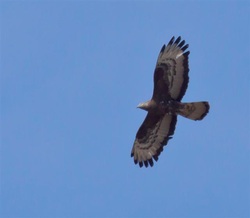 Honey Buzzard (Pernis apivorus)
Time to spend about three hours at the "ponds" with my Belgium friend, Marieke before I had to get her back to the airport for her return flight to Belgium. Over 40 species recorded including Booted Eagle, Marsh Harrier and Kestrel but pride of place must go to the quartet of Honey Buzzards that graced us with their presence for five minutes.
Mind you, watching a good-condition Fox wander along the back of the laguna Grande was not an everyday experience. Sierra Loja
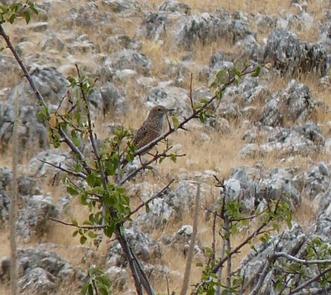 Juvenile Rock Thrush (Monticola saxatilis) captured by John Wainwright
All the activity of recent days/weeks seems to have been taking place just over the Malaga province border near Loja where John and Jenny Wainwright have been making regular trips up the mountain track to the summit of the Sierra Loja. Lots of Golden Eagles, all three wheatears and, of course, both Blue Rock Thrush and at the higher levels that handsome Rock Thrush. So much so that I, too, ventured over today and managed to find all the regulars other than the Rock Thrush. Still, I did have a marvellous view of an immature Golden Eagle gliding immediately overhead and an even closer view of a Spectacled warbler on the way down.
Ventas de Zafarraya & Sierra Tejeda
 Moulting Rock Bunting (Emberiza cia)
Unpleasant weather forecast but it managed to hold off all day so allowing me to check out the mountain sites of Ventas de Zafarraya and the Alcaucin picnic area on the Sierra Tejeda along with the area at the back of Zafarraya. Still lots of Bee-eaters to be seen and a Peregrine Falcon was a special treat. Goldfinches have obviously had a good breeding season and good numbers of Northern Wheatears were seen. Unlike many recent visits, the number of Blue Rock Thrushes outnumbered the Black Wheatears. CLICK HERE to be taken to the full reort on the Blog.
ABS Group vsit to Guadalhorce, Malaga
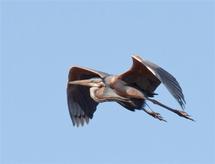
18 members met to check out the Guadalhorce Reserve, Malaga on Saturday 24 August and in lovely weather managed to record 60 species bewteen us. Only a few waders present but a Little Bittern was a delight as was the Little Gull and close sightings of a couple of Kingfishers.
Laguna Dulce & Serrania de Ronda
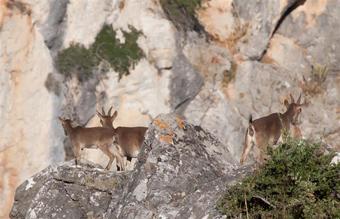
An interesting, leisurely drive over to Ronda on Friday calling in at Laguna Dulce and the neigjbouring Campillos lagunas. There were Greater Flamingos on very water totalling in excess of 150 and the Coots certainy seem to have returned to Laguna Dulce in readiness for the winter. Indeed, rather early I thought, there were also approaching 80 White-headed Ducks on the same water; a number I usually expect in autumn rather than mid to late-summer.
The drive up into the Serrania de Ronda and Montejaque area produced a wealth of birds and especially a good range of warblers. Also lovely to see both Great Spotted Woodpeckers and Golden Orioles and, as expected, the Griffon Vultures were out in good force and manged to bring along a single Black (Monk) Vulture for the ride. There were also clouds of butterflies present at the higher level. Both visits are now published on the blog (CLICK HERE). Axarquia Bird Group visit to the Rio Velez
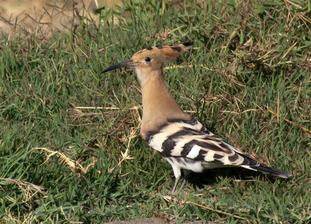
A very hot morning for the last monthly field visit before we break until September. Nine members present and 36 birds recorded including all three small plovers, Bee-eater, lots of Hoopoes and many Spotted Flycatchers, Reed Warblers and Zitting Cisticolas. Over the water Common and Pallid Swifts, Barn and Red-rumped Swallows along with House Martins. Plenty of seagulls including a small number of Audouin's Gulls. Whilst there may have been hordes of Monk parakeets, the main joy was the Olivaceous Warbler, Purple Heron and a small flock of Red Avadavats.
Axarquia Group Visit to Extremadura
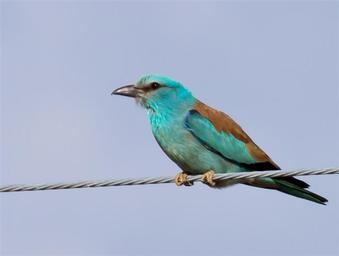 Roller (Coracias garrulus)
A little late in publishing a report of the twelve of us who spent the first week of June in Extremadura based on the lovely old town of Trujillo as within two days of returning I was off back to the UK for a few weeks to catch up with children and families. But we certainly had a great time and eventually recorded just over a hundred species between us including loads of Rollers, Great Spotted and Common Cuckoo, Egyptian, Griffon and Black Vultures, Blue Rock Thrush and many others.
A little disappointed not to see either the local Eagle Owl, Black-shouldered Kite nor Iberian Imperial Eagle, never mind Golden Eagle but, on the other hand, we did record Great White Egret, Pin-tailed Sandgrouse, Savi's Warbler and very many Purple Heron. It was also very rewarding to, once again, see so many Lesser kestrels along with their cousins the Common Kestrel. And who could possibly be disappointed after seeing scores of Black Kites along with Red Kites, Buzzards and that ghostly white male Montagu's Harrier on an almost daily basis. June meeting of the Axarquia Bird Group - Guadalhorce
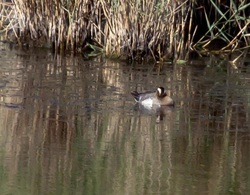
Fifteen members of the Axarquia Bird Group present at the Guadalhorce in Malaga for the June meeting - even if it was a day before the month started! A male Garganey was special, the pair of Collared Pratincoles and a Whiskered Tern were an added bonus but to also have a Roller in full view was extra special. The Dipper Experience!
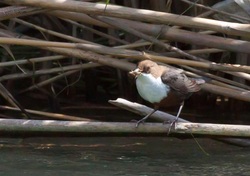
Wonderful to watch a Dipper bringing food to its nest on the bank of the Rio Guadalfeo north of Salobrena. Lovely "bumble-bee" flight and that beautiful white waistecoat as it turned and looked staright at me. Extra bonus also having Grey Wagtails in front and Golden Orioles above during my short stay at the deserted site. Sierra Loja and Axarquia Bird Group
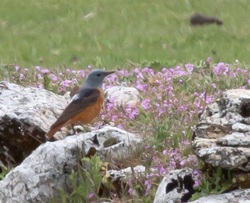
Twelve members of the Axarquia Bird Group spent the day on the Sierra Loja on Thursday 16 May and along with John and Jenny Wainwright who birded the area the previous Tuesday, all the anticipated birds were recorded, totalling in excess of fifty species including raptors, thrushes, wheatears, warblers. tits, corvids and finches. No doubt about it, though, pride of place must have gone to either/both the Eagle Owl and th eRock thrushes, both of which presented very well.
Broad-billed Sandpiper comes to MalagaBroad-billed Sandpiper
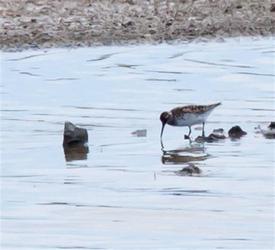 Broad-billed Sandpiper (Limicola falcinellus)
Always the same when my Belgian friend, Marieke Berkvens, visits me; she can guarantee that something special will be about and be seen for the first time. This May was no different as Marieke's visit coincided with a very rare visit of a Broad-billed Sandpiper to the Guadalhorce in Malaga where it spent all its time feeding; on its own but in the mixed company of Dunlins, Sanderlings, Curlew sandpipers and Bar-tailed Godwits not to mention Little Ringed, Ringed and Kentish Plovers. What a find! Not content with one new "lifer" when we produced a very late Yellow Wagtail of the UK subspecies (Flava flavisima) and then the Superb Starling at the local golf course. Three new "lifers" in the period of a couple of hours. It almost seemed irrelevant that we also had a Honey Buzzard come in high from the sea.
Little Bustard and Stone Curlew
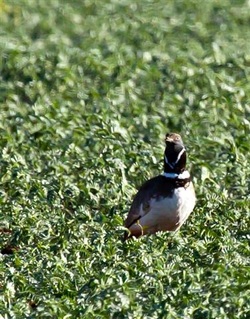
A great start to the month with 60 species recorded on May Day, despite most of Spain being on holiday and visiting well-know birding sites such as Fuente de Piedra and Laguna Dulce. But, notwithstanding, I had the area around Laguna Herrera to myself for almost a couple of hours and managed to have good views of both Little Bustard and Stone Curlew, not to mention a good selection of raptors and waders including Montagu's Harrier and Black-winged Kite; Little Stint, Wood and Curlew Sandpiper plus three different Terns, Whiskered, Black and Gull-billed.
This Little Bustard was standing up proud and definitely giving me the evil eye as I watched him through bincolulars in te neighbouring field. Rio Velez, Torre del Mar
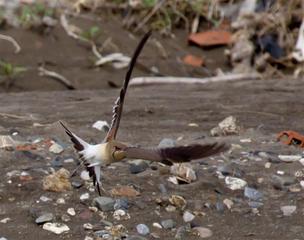 Collared Pratincole (Glareola pratincola)
Now that, hopefully, the awful rains of these past four or more months have finally finished it is so good to see that the lower reaches of the Rio Velez in Torre del Mar are making a marvellous recovery. There are lots of new gravel beds in mid-stream which will offer breeding and feeding sites for the many visiting small waders and, once again, the vegetation along the banks is looking lush and green; lots of new bamboo and reed growth resulting in many Nightingales, Reed and Cetti's Warblers, all contributig their own band of song to those prepared to visit and wait awhile to listen to these beautiful notes. Certainly, visiting on Friday 26 April there was an abundance of all three songsters along with dozens of Dunlin and Sanderling plus a well-represented presence of all three small plovers, Redshank and both Wood and Common Sandpiper. A half-dozen Common Pratincoles was simply an added bonus. Long may it continue.
Rutland Water
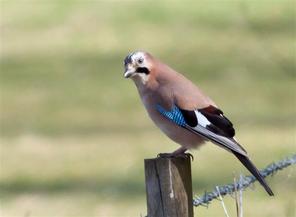
Earlier this month whilst back in Britain, I was able to pay a couple of short visits to Rutland Water, my local patch from our house in Stamford, a mere ten miles (16km) down the road. To be expected, despite the poor weather, I was able to pick a range of ducks and geese plus Mute Swan and also, at last, see such obvious birds a s a Dunnock! An illustrated account of my visit is published on my alternative blog site (http://axarquiabirder.blogspot.com) which covers visits outside of Spain so, if interested, CLICK HERE to be transferred across the link, etc.
Guadalhorce, Malaga
 Black Tern over the Rio Viejo
A little on the breezy side even if the sun was shining. The water levels are beginning to drop, albeit both arms of the river still look very full as does the Rio Viejo (Old River), so we can at last look forward to returning waders, especially for some as they are now almost in full summage plumage as they make their way north. A few Purple Herons and the odd juvenile Greater Flamingo can usually be found along, this time, with a quartet of Whimbrels. Single Whiskered and Black Terns on the western and eastern arms respectively were another pleasant surprise and, of course, there are lots of Woodchat Shrikes to be seen everywhere along with Sand and House Martins, Barn and Red-rumped swallows and passing Swifts. Nothing at sea, though, as the water was far too rough.
Axarquia Bird Group visit to Las Norias
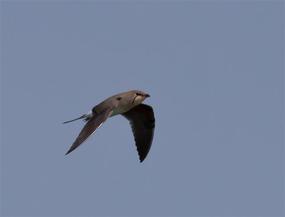
What a day for this month's Axarquia Bird Group visit which, after a long absence, took us into Almeria Province to visit the very large sheet of water at Las Norias followed by the lagunas and ponds just to the west of Roquetas de Mar. A total of nine made the long trip and we were rewarded with not a single Greater Flamingo all day but we certainly did see some great birds, including a range of ducks, all three grebes, Whiskered and Sandwich Tern and some very aclose, but active, Collared Pratincoles. White-headed Ducks, Red-crested Pochards and a Red-knobbed Coot within three metres was also very enjoyable, especially watching the first as they swam under the clear water in front of us.
Sierra Loja with the Andalucia Bird Society
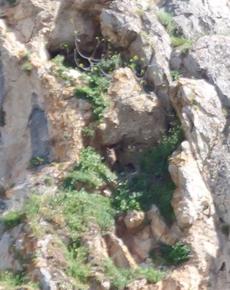
This was agreat day out in Granada Province led by friend and all-things-wildlife expert, Mick Richardson. Probably the biggest ever turn out with 27 members present and we were not to be disappointed with either the weather (it had rained on the previous two years for this field visit) or the birds seen. Indeed, we also had a wonderful display of wild flowers which were identiified by Mick assisted by others present. Lots of Northern and Black-eared Wheatears but for the few of us who made the return trip to the "secret quarry" on tghe way down the mountain we had wonderful, long views of the nesting Eagle Owl through our scopes. Visit the blog site (CLICK HERE) for a full, illustrated report.
Great Bustards and Harriers
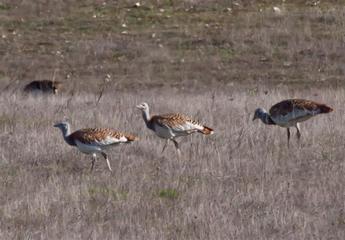 A group of Great Bustards (Otis tarda)
No sooner do I get back from one monthly field visit and it is time to go on another; the recently postponed March outing of the Andalucia Bird Society. This month took us to the Great Bustard triangle between Osuna and La Lantejuels where not only did we find as many as eight Great Bustards but also Marsh, Hen and Montagu's Harriers along with Lesser Kestrels and a trio of Black-bellied Sandgrouse. Despite the day turning very wet after midday, all those present had a marvellous day's birding and also recorded Alpine, Common and Palld Swift as well as Red-crested Pochard and many more wonderful birds to make the journey most worthwhile.
Axarquia Bird Group Visit - March
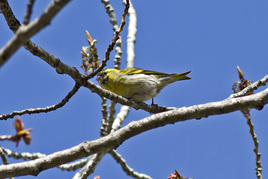 Siskin (Carduelis spinus)
On a beautiful, warm and sunny day nine members spent a couple of hours at the Rio Velez estuary in Torre del Mar before driving up the the two picnic sites above Alcaucin the Sierra Tejeda. With over 50 species recorded, of which almost forty were a the flooded and fast-flowing Rio Velez, it proved a very successful day. Lovely to see a few waders and an Avocet atthe former along witht e first Woodchat Shrike of the year. In addition to five gull species we also had a distant Gannet.
The wooded areas provided most of the tits, Nuthatrches and both Green and Great Spotted Woodpecker along with a hiogh Golden Eagle. Lots of Crossbill but, erhaps, the bigget surprise was the Siskin photographed by Steve Powell - and only identified when looking at the end results! First Spotted Flycatcher of the Season
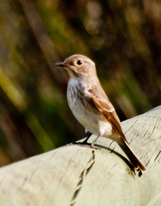
Visiting birder, Dave Withrington, seems to have found the first Spotted Flycatcher of the season with a sighting on the Anoreta Golf Course near Rincon de la Victoria, Malaga on 1 March. Alays a good omen when new birds are seen on St David's Day - or. perhaps, I am just biased!
February Visits
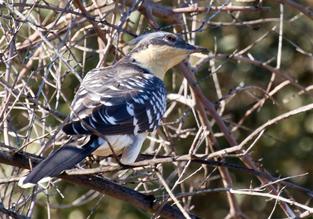 Great Spotted Cuckoo (Clamator glandarius)
Double visits this month; first to the Odiel Marshes and Donana National Park in Huelva Province for three days so that I could participate in the monthly field visit of the Andalucia Bird Society and then our own Axarquia Bird Group visit to El Robledal on the Malaga/Granada border in the Sierra Tejeda parque national.
The first produced a Great Spotted Cuckkoo on the way down to be followed by the scarce (for that area) Tufted Duck and a very rare Long-tailed Duck. On the return journey we had our first Black Kites of the summer and a final tally of 104 species. The local meeting gave us very close views of a pair of Little Owls whilst, in the woods, just about every spiecies of tit and finch. Again, despioete the weather, a very pleasing total of 45 species. Full reports of all can be found on the Birding Axarquia blog. CLICK HERE. Bittern, Spotted Crake & Black Stork
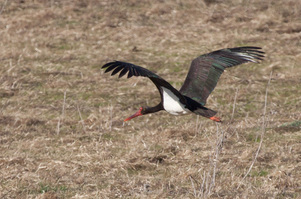
It has all been happening in the Axarquia over these past few weeks. On Sunday 27 January we had a Black Stork flying over Puente don Manuel which was then alsio seen at the Rio Velez above Torre del Mar. Meanwhile, at the beginning of the year, local Velez Malaga birder, Kirree (who loves to walk down the Rio Velez from Velez Malaga to the coast and back) managed to find both a Spotted Crake and a Bittern; Common or Great Bittern that is Avetoro Comun Botaurus stellaris. Meanwhile, the horrendous winds of the past fortnight now seem to have departed so many of us have been able to get out and enjoy some birding with the sun on our backs and hardly a breath of wind to spoil the day. But how long will it last?
Stock Doves to be seen
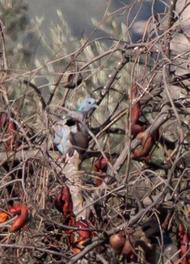
Stone Curlew numbers may be down this year but there seem to have been good numbers of Little Bustards wintering on the fields around Huetor Tajar in western Granada Province. However, the speciality at the moment seems to be the arrival of a large flock, probably approaching thirty in number, of Stock Doves to the area. Such lovely birds but with a young male Peregrine Falcon also residing in the neighbourhood, let's hope he chooses to feed on the plentiful supply of Wood Pigeons, Rock and Collared Doves. Please save the delicate Stock Doves alone so that we can all enjoy them!
Great day's birding in the area yesterday and the full, illustrated report can be found on the blog (CLICK HERE) or access from the header above. Short-eared Owls
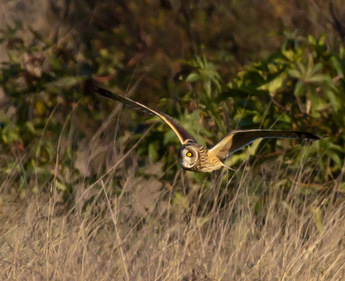
At least four individual Short-eared Owls (Asio flammeus) are still residing at the Guadalhorce in Malaga and are best seen about forty minutes before dark, i.e. in late December/early January about 5.15 pm. At this time there is still some light, albeit the sun is very low, so photographs are still a good possibility. The birds recently have been quartering the large field between the footbridge and the laguna Escondida which has the great advantage of having the light behind you. However, they also like to frequent the narrow band of grass and small trees between the track and (western) river which can produce direct light into the camera. But you still get to see the birds if you are lucky.
Ring Ouzels, Fieldfares and Redwings
If you need a change from the usual Blackbird, Blue Rock Thrush and Mistle Thrush then it would appear that the Sierra Loja is the place to be at the moment. John and Jenny Wainwright found all of the above and, I am sure, it was only their slight misfortune that they did not add Song Thrush to complete the set, especially bearing in mind that Robin and Black Redstart were also recorded on their Boxing Day trip up the mountain. CLICK HERE to see their fill report on the blog.
Axarquia Bird Group visit to Fuente de Piedra

Seventeen of us present for a great morning's birding at Fuente de Piedra on Thursday 20 December and well over 60 species recorded - and still counting! Thousands of Flamingos and about 500 Cranes seen along with a mixture of ducks, raptors and small birds. A full illustrated report can be found on the blog (CLICK HERE).
Meanwhile, to all readers may I wish you a peaceful Christmas and a very happy and healthy New Year. Prestigious Award for Andy Paterson

This year's annual award by SEO (the national Spanish birding organisation) at its AGM on 8 December went to our very own Andy Paterson. We think that this may be the first time that a non-Spaniard had been so awarded as he was "homaged" by a selection of photographs accompanied by Bizet's duet from the "Pearl Fishers" (my favourite classical duet) recognising thirty years dedicated sevice to ornithiology in Spain. Well done Andy and thoroughly deserved.
Rio Velez, Torre del Mar
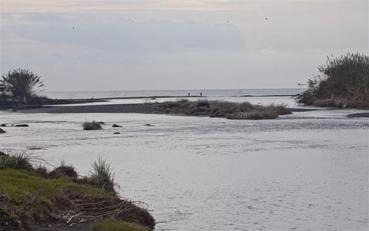
The recent heavy rains completely scoured the banks and meadows of the lower Rio Velez in Torre del Mar. Early days yet but I trust that some gravel will reappear as the waters finally subside so that we can regain our small waders, especially Little Ringed and Kentish Plovers. Similalrly, with the vegetaion on the banks washed away it remains to be seen what effect this will have on the resident Cetti's warblers and visiting Reed Warblers and Nightingales in the new year. There also appears to be nothing left for the Hoopoes to feed on.
Portugal Visit
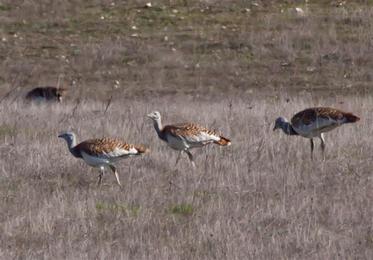 Part of the 52-strong flock of Great Bustards (Otis tarda)
Great week in Portugal based at Quinta do Lago on the edge of the Ria Formosa National Park. Travelling with Jenny and accompanied by Steve and Elena Powell we had a stop at the Odiel Marshes in Huelva on the outward journey and a day in the Donana National Park on the return journey. We even managed to drop in at Fuente de Piedra on the way home so that Jenny could see the Cranes which now seemed to total in excess of 500. Overall, with visits to Castro Verde and the Formosa, we managed to record a magnificent 108 speicies including both Golden and Spanish Imperial Eagles and a flock of 52 Great Bustards. A handful of Fieldfares in the Donana was somewhat of a surprise so expect colder weather! Great birding in good weather; dry all week. Full reports are already published on the Blog but without any photographs as my limit has now been reached. A new Blog will shortly be started (New Biding Axarquia) in order that future blogs may once again be illustrated.
Cranes back at Fuente de Piedra
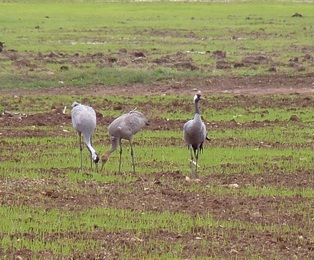 Common Crane (Grus grus)
[PHOTO: John Wainwright]
A few days earlier than usual but the Common Cranes Grus grus have arrived back at Fuente de Piedra for their winter holidays. Small numbers at the moment but over the next week or so we can expect to see our wintering flock build up to, and hopefully pass, the one thousand mark. For those visiting to see these most graceful birds, you will need to drive down towards the far end of the laguna checking out the fields on either side of the road and, especially later in the afternoon, the fileds on and around the water as seen from the Mirador de Cantarranas.
Axarquia Bird Group Visits
 Long-legged Buzzard (Buteo refinus)
Mid-October was certainly exciting with a three-day visit by the Axarquia Bird Group to Cadiz Province. based in Vejer de la Frontera. We twelve participants were able to see some magnificnet raptor movements above Tarifa on Wednesday 17th and then a most enjoyable day in La Janda on the Thursday. The Friday started wet but soon cleared up as we once again made a morning vist to La Janda before all taking our separate ways home. Some really good birds seen including a Long-legged Buzzard and photographed by Steve Powell (as shown) taking off from an electricty pylon immediately in front of us. More than can be said for the follow-up meeting at the Rio Velez in Torre del Mar on Thursday 25th as the heavens well and trully opened washing everything out to such an extent that even the ducks refused to come out and play!
An interesting birding week-end
 Booted Eagle (Aguilillia Calzada)
Whilst I was at the Guadalhorce in Malaga with members of the Andalucia Bird Society on Saturday morning (13 October) having tremendous views of a low-flying Booted Eagle, the Wainwrights were making their way home from the Donana and were successful in finding a male and eight femail Great Bustards in the usual area on the outskirts of Osuna. Meanwhile, the following morning, Steve Powell was down at the Rio Velez in Torre del Mar being entertained by a ravenous Hobby making more than a meal of the plentiful supply of beautiful dragonflies. Looks like we all saw some great birds.
Then, of course, there were all those gorgeous dragonflies (those not eaten by the Hobby!) photographed by Steve. CLICK HERE for the reports on the blog. Charca de Suarez and Motril Marshes
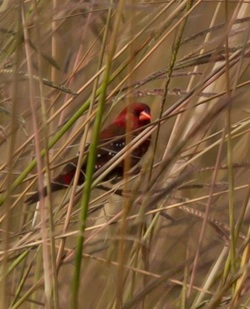
It would appear that there still seems as much to be seen outside the Charca de Suarez reserve as inside, so it makes sense to allow extra time both before and after a visit to this site. Now that they are entering their natural breeding season, there are many Red Avadavats to be found in the tall vegetation and these are absolutely delightful little birds to find; the males in their resplendent red coats with white spots to match the red beaks. Whilst they are much plainer in colour, the females are, nevertheless, still worth sighting. Very active little bids and no larger than our common Wren and with a strong flight. Also present these past few weeks have been Ferruginous Duck and White Stork in the reserve and, yesterday, a lonely Spoonbill feeding in the marsh ditches. 10 October 2012
Axarquia Bird Group visit to the Guadalhorce, Malaga with a record turn out
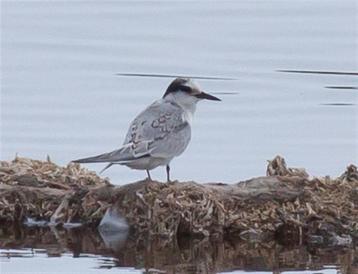 Immature Common Tern on the Laguna Grande, Guadalhorce, Malaga
Great to see 22 members present for the first field meeting of the season. Lovely to see so many friends after our summer break and we were not to be disappointed with almost 70 species recorded. Our Osprey is back and we also had a lovely male Marsh Harrier not to mention a whole range of warblers and other passerines. In addition to the gulls, we also had both Common and Little Tern and even a small selection of waders. The Kingfisher was an added bonus but do not mention all the raucous Monk Parakeets to certain parties! A full, illustrated report can be found on the blog (CLICK HERE).
Autumn Raptor Migration
Much evidence this week of the on-going raptor migration with hundreds of Honey Buzzards, scores of Griffon Vultures, Black Kites plus Short-toed, Bonelli's and Booted Eagles moving south along the ridge above Ventas de Zafarraya. See the blog for the latest reports by CLICKING HERE.
Hoopoe breeding success
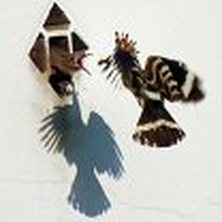 Hoopoe at nest hole feeding youngster
Ceck out the blog to read about Ollie Cordell's spring experience with a pair of Hoopoes successfully raising two broods (two chicks in each) in the roof cavity of his neighbour's temporarily empty house. One of the bonuses when villas are left empty for part of the year so that birds such as Hoopoes and Red-rumped Swallows come and use them as part of their breeding territory and give much pleasure to those of us who remain all the year round.
A selection of Ollie's photos taken between March and May 2012 can be found on the blog - CLICK HERE. Autumn Migrants Return
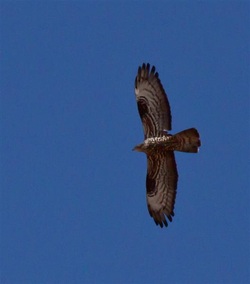
Vists to both the old railway track above Ventas de Zafarraya in the Sierra Tejeda and the Guadalhorce in Malaga this week would seem to confirm that our Autumn Migrants are beginning to arrive thick and fast. Some, such as the waders, may well spend a few days or weeks with us but others, such as the Honey Buzzards and Griffon Vultures are making their way ever south. See the blogs (CLICK HERE) for more specific details but there were a number of waders present on the 24th at the Guadalhorce including Redshank, Greenshank and over fifty Ringed Plovers whilst at least eleven Honey Buzzards and a single Griffon Vulture drifted over the high peaks above Ventas de Zafarraya under the watchful eye of a patrolling Peregrine Falcon.
Andy Paterson's new "Pelagic" book is published
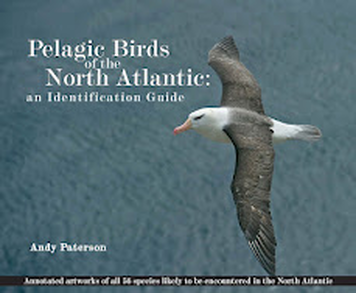
Published on 1 August even Andy had to wait until he reached his sister's home in Leeds last Wednesday before actually getting to hold and look at his new book, Pelaqic Birds of the North Atlantic. And to think that he actually managed to use many of the illustrations when giving his short talk on the same subject at this year's International Bird Fair at Rutland Water on Friday 17 August. Quite a pleasure for the seven of us who accompanied Andy to the marquee in readiness to give him some stick and "audience particaption" to liven up the occasion. In the event, as reported on the blog, we represented less that 5% of those present and it was a joy to listen to a man living his dream as they say.
As reported on said blog, this book is not the definitive thesis on sea birds nor is it a "bookshelf guide" to be consulted upon the return from a pelagic trip. Rather, it is a hands-on guide to accompany you on the boat and, as such, has been printed on waterproof paper. If you told me that I would do just as those hilarious cynics at "Birdwatch" did before preparing their review - which sould appear within the next couple if issues of this well-known monthly magazine. Waterproof paper to be used at sea? They put the book in the sink at the office and turned on the tap. Having done that, they might just as well have gone the whole hog and poured salt into the water. Anway, the book survived. As Andy points out on his own blog, this book is " .... for the real seabirder who isn't afraid of doing his/her own active chumming! And it's on waterproof paper!" The BIRDBOOKER REPORT of Ian Paulsen says (12/08) 'In short, this is a must-have guide for serious birders on both sides of the Atlantic. RECOMMENDATION: Pelagic birders should find this waterproof guide useful. Monk Parakeet Cull
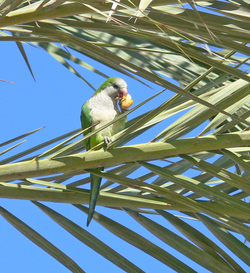
This week the local newspaper reported that drastic action had been (still on-going?) taken to reduce the number of Monk Parakeets, considered an invasive species, in Malaga. To date a total of 91 nests have been removed from trees by the Town Hall to keep the birds' population under control. The Town Hall stated that the main reason was to prevent nest from falling and harming pedestrians. I know that once outside any available hole or crevice some nest can pile up quite high as stick and after stick is added but, far from injuring passers-by, I have yet to hear anyone mention a nest actually falling of its own volition.
So, if you can tollerate their raucus calling but enjoy the Monk Parakeet's gorgeous green colouring, expect to see fewer birds in the coming months until they have restored their numbers through the natural process, of which they seem to be very efficient! Honey Buzzard looking forward to Africa
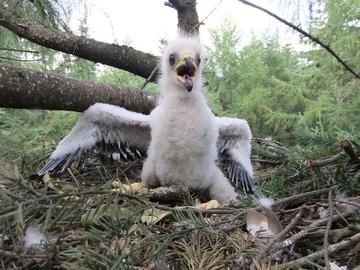 Honey Buzzard chick (PHOTO: Herman Nuytemans)
CLICK HERE to read the latest news from Belgium where this little Honey Buzzard has arrived, as last year, rather late in the normal breeding season. Last year's chick was left to fend for itself when the time to migrate came and, as a result, ended up as an easy meal for a larger raptor. How will this little chap progress? Will he be a survivor or will his parents once again desert him as they start their southern migration? It is probably a case of "Watch this space."
The Autumn Migration is well underway
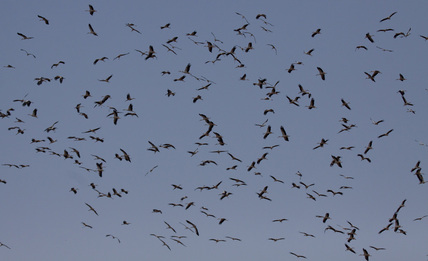 A small section of the flock of 500+ White Storks heading south from La Janda
First signs of the Autumn Migration are well underay down at La Janda with well over 500 Black Kites and the same number of White Storks seeking out warm thermals over La Janda on the last day of July.
A visit with friend Any paterson produced almost 60 species including Black-shouldered Kite and both juvenile Marsh and Montagu's Harriers. However, the single Griffon Vulture recorded looked as if it had just come back from either a very bad haircut or thirty minutes in a blast furnace; its moult was so severe it was a wonder the bird could actually stay in the air. All the latest from the BTO - Where are the cuckoos?
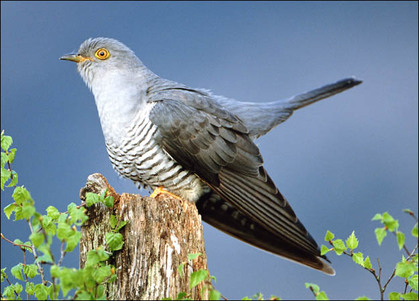
I have just received my latest comminication from the British Trust for ornothology (BTO) and pride of place must surely go the latest news on the great Cuckoo Migration study. Following on from last year's adventures of the five radio-tagged birds that departed to Africa, only two managed to successfully return, a further group of eleven males has been similarly tagged this season and, already, thay have not surprisingly got fed up with the British weather and started on their return migration to south of the Sahara. The latest information is as follows:
The English Summer is Over for our Cuckoos! Twelve of our thirteen male Cuckoos have already left the UK and Chris has become the first of the tagged Cuckoos to arrive in Africa this year! Lyster, the last to leave in 2011, headed off twelve days earlier than last year, probably as tired of the poor weather as the rest of us! All the Cuckoos are now named, with Roy, Lloyd and John joining the ranks. Wallace is the only male remaining in the UK, while the others appear to be preparing for their southward crossing, as they line up on the northern edge of the Mediterranean, between the extreme east of the French Mediterranean coast and Montenegro FOR MORE INFORMATION CLICK HERE. Having difficulty separating Common and Honey Buzzards at height? Then (CLICK HERE) to watch this video featured on the same BTO mailing. It is possible to subscribe to the BTO for your own free email update at the following: http://www.bto.org/news-events/e-newsletter Contributors to the Website and Blog
Regular readers will have seen many recent reports from John and Jenny Wainwright reagrding their birding exploits. Today we also have a report from Mick Richardson, which in addition to the birds, gives lots of butterfly and dragonfly details. My special thanks to all of them. If you are making a birding visit to the Axarquia region or close by then why not send in your report so that others, too, can enjoy your experience - or even frustration!
Both Mick and the Wainwrights live on the other side of the sierras to our north; Mick near Loja and John and Jenny in Salar, both of which are in the extreme west of Granada Province very near to the Malaga Province border. This gives them the excellent opportunity to regularly visit such glorious sites as the Sierra Loja and Arroyo Marin near Archidona. It is usually their respective reports that send me, and others, off to these sites so that we, too, can enjoy the birding and wildlife to be found there. It is always a joy to hear what they have been up to birding wise and we are so pleased that they are also able, when available, to join the Axarquia Bird Group on its various visits. Great Axarquia Bird Group Visit to Charca de Suarez reserve near Motril
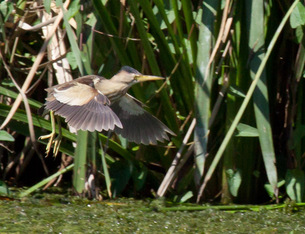 Little Bittern (Ixobrychus minutus)
Twelve members of the group spent the morning at the Charca de Suarez Reserve and, including other birds seen by memebrs on either/both the journey to and from Motril managed to notch up 50 species on what was a very hot and sunny day. In the end, a good day was, I believe, had by all. Great to see extremely close views of a Purple Swamphen and a pair of Litle Bitterns graced us with their presence. Some even managed to find a Black-shouldered Kite on th eway home just north of the reserve having made a stop at Padul. Most frustrating, not to mention envious, for those who did not venture that little extra bit inland. A full, illustrated, report can be found on the BLOG - CLICK HERE for re-direction.
Where have all the Northern Wheatears gone?
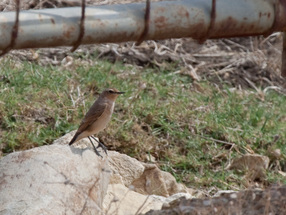
In my previous three visits to the Sierra Loja I have seen Black-eared but no Northern Wheatears. Reading recent reports and blogs there seems also to be a dearth of these Northern Wheatears. Where have they all gone? Finally, this morning, I received a report from Liz and Marcus Roots that they had seen a single Northern Wheatear when visiting the Sierra de Almijara but, at the same time, added a note that they would normally expect to see at least three of these delightful summer visitors. I have seen none for a couple of months and, in a normal year, I would expect to come across the odd individual at the roadside when out out n the countryside - but nothing. Is it just me or are other birders not seeing any Northern Wheatears in their past, or usual, sites?
Amazing end to the month
 Golden Eagle about to be mobbed by a bunch of Common Magpies (PHOTO: Steve Powell)
What a last couple of days to May! I did a circular tour of the Sierra de Tejeda on Wednesday whilst Steve and Elena Powell were over in the Caucin valley near Loja producing all sorts of wondrous birds, including all three "white" eagles and a very close view of a Golden Eagle, not to mention Golden Orioles and a load more. The following day John and Jenny Wainwright took to the Sierra de Tejeda in the opposite direction from me and also produced a wealth of super birds. For full details visit the Blog (CLICK HERE) or log onto Mick Richardson's account of the Caucin Valley at www.lojawildlife.com
John & Jenny Wainwright's Donana Adventure
It looks very much as if John and Jenny Wainwright our on their way to the Donana National Park for some exciting birding over the next few days. However, rather than take the direct route, John and Jenny first called in at the Laguna Dulce just east of Campillos and then the lakes to the north of Osuna before searching the steppes south of La Lantejuela for the illusive Geat Bustards. It certainly sound as if they are off to a great start as can be seen by reading their first instalment on the Blog.
CLICK HERE TO BE RE-DIRECTED. Axarquia Bird Group Visit to the Sierra Loja
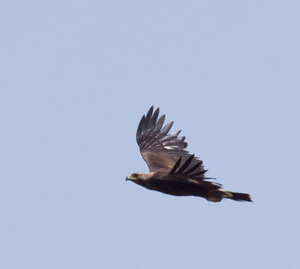
We had a great day yesterday, 17 May, as eight of us made our way up to over 1500 metres (almost 5000 feet) in the Sierra Loja above the town of the same name. No Eagle Owl but we did see a couple of Golden Eagles and, in addition to the many Bklack-eared Wheatears, Azure-winged Magpies and both Dartford and Subalpine Warblers, we did finally managed to locate a pair of Rock Thrushes (that's Rufus-tailed Rock Thrush) at the higher altitudes to go with the Blue Rock Thrushes already recorded.
A full, illustrated report can be found on the blog - CLICK HERE. Birding Bonanza!
 Montagu's Harrier (Circus pygargus)
What a week; lots of great birding in parts south and west. Wednesday it was down to the Costa Luz to find the breeding Bald Ibis with Andy Paterson followed by Glossy Ibis at La Janda and then a right mix of raptors at Bolonia including over 300 Honey Buzzards. Thursday saw me on the move after having dropped Jenny off at the airport with stops at Fuente de Piedra, the Campillos lakes and a short foray into the steppes west of Osuna. Lovely to see lots of Lesser Kestrels, Rollers and Curlew Sandpipers - but not all at the same site! Meanwhile, the Wainwrights were up the mountain above Loja and managed, once again, to get a good look at the breeding Eagle Owl as well as all the resident Wheatears. I trust we manage to do the same when we visit the Sierra Loja with the Axarquia Bird Group next Thursday. As with yesterday, today was very hot and sunny and still the very strong wind. A good morning look at the Laguna Gosque at Martin de la Jara which promises to be a good Autumn through Spring site and then via Lantejuela to the steppes. Lovely male Marsh Harrier seen before calling in at Fuente de Piedra on the way home where, this time in addition to yesterday's birds, I also found both the Wood Sandpiper and a couple of Little Stints. Feeling tired now but have to be up and out early tomorrow to meet up with British holiday makers from London, Charlotte and Alex, along with their four-month old baby daughter who is being introduced to our wonderful hobby at an early age. Hopefully with a 9 am start down at the Rio Velez we will see all the birds before the "naked brigade" start their morning saunters!
As usual, a full, illustrated account can be found on the latest blogs. CLICK HERE for the link. A great birding day to 4 local venues
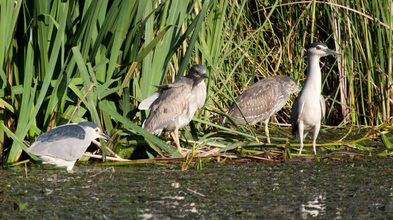 Adult and juvenile Night Herons
Yesterday, 2 May, first the local lake at La Vinuela, then the Rio Velez at Torre del Mar followed by the Rio Seco at Frigiliana before spending the evening at the Charca de Suarez Reserve near Motril. Before we even started, Steve Powell had recorded a most surprising visitor at his local Rio Seco with the sight of a Roller on the wires. Only about for a short while, but long enough for Steve to get some good photos, as this regular breeder in Extremadura made a, presumably, brief stop in our part of Spain before continuing its movement north. Meanwhile, plenty of Bee-eaters, Nightingales, Spotted Flycatchers and Woodchat Shrikes and, at the Charca, both Purple Heron and, at least, three adult and four juvenile Night Herons along with a very shy Little Bittern. And we even had a Little Owl as we approached the reserve. CLICK HERE for the full, illustrated report on the blog.
Birding on a May Day's Holiday
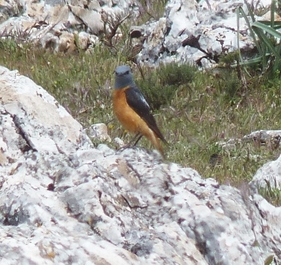
At last some decent weather so th eworld and his dog were out to make the most of it on the May Day Holiday. Not so good for Steve and Elena Powell in the Nerja area, better for Andy Paterson up at Fuente de Piedra albeit he had to contend with the visiting masses but best of all for John and Jenny Wainwright who took themselves up the mountain above Loja. Whilst Andy did record a good variety, if not numbers, of waders he did at least get a good photo of a Great Reed Warbler. As for John, he had another glimpse of the Eagle Owl to set him on his way before lots of Wheatears, all three local species, and a close view of the lovely Rock Thrush.
As always, a full account of John's visit can be found on the blog. CLICK HERE or use the link at the top. To see Andy's report CLICK HERE to be connected to his blog. Exciting end to the month
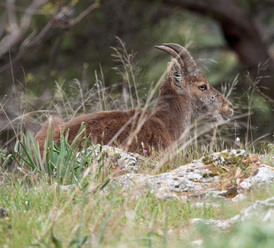
Lots of birds to be seen on the Sierra Loja last Thursday and this morning, 30 April, a visit to the picnic site at Alcaucin before the rains reappeared produced Great Spotted Woodpecker, Longtailed Tit, Firecrest and Nuthatch in addition to a pair of Spanish Ibex.
Check out the blogs for full, illustrated reports. CLICK HERE Busy Birding; Guadalhorce, Malaga & Rio Velez
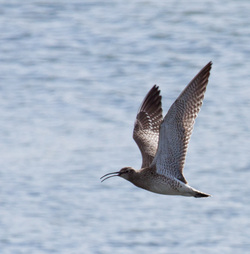 Whimbrel
at the Guadalhorce, Malaga
Two mornings full of birding. First on Thursday with the Axarquia Bird Group at the Guadalhorce in Malaga when over 50 species were recorded including a male Cuckoo, Shelduck, Spoonbill and Purple Gallinule. However, pide of place probably went to the quartet of Whiskered Terns who rested a long while in front of the main hide before proceeding to give a glorious feeding display in front of our eyes. A short-stopping Whimbrel was also a bonus although no raptors other than a single Kestrel.
The following morning I was off down to the Rio Velez in Torre del Mar where, apart from the usual birds, I had plenty of Nightingales singing, a single Cormorant at sea close to the beach and my first flycatcher of the year when a Pied Flycatcher perched less than thre metres away. Lots of waders in addition to the good number of Blackwinged Stilts including both Redshank and Greenshank plus most of the Sandpipers, including Green, Marsh, Common and Wood. The small flock of Sanderlings were still present and the first family of Mallards, with nine day-old ducklings being introduced to the water. Full illustrated reports can be found on the blog. CLICK HERE. At last, back to Birding!
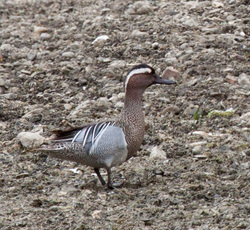
After what seems ages I finally managed to get out this morning for a couple of hours down at the Rio Velez in Torre del Mar. Even the weather held off until i got home; dull and cloudy with a gentle breeze but no rain. And to make it all worthwhile I managed to find both a friendly Golden Plover that posed for ages and a most handsome Garganey near the road bridge. A full report, with photographs, can be found on the blog. (CLICK HERE)
Hawfinches, Wrynecks and Nightingales
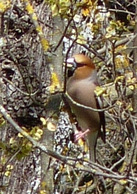
Read all about John Wainwright's visit top Archidona on 12 April when he managed to record 20 Hawfinches, a couple of Werynecks, Nightingales and more on the Blog.
CLICK HERE for a speedy connection. Axarquia and District Birding - early April
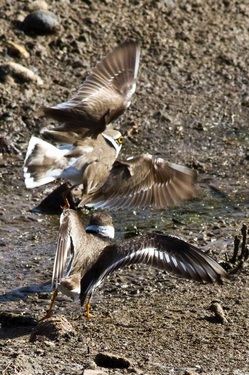
I may have been "out of action" for the past week but lots of my friends have been out and about birding including Andy Paterson, Eric Lyion and Steve Powell. The various findings have been updated to the "Malaga Sightings" page and a number of illustrated blogs have been produced reporting on the birds seen. Log on to the Blog (CLICK HERE) for more.
A Little Ringed Plover Charadrius dubius being seen off by its larger cousin, the Ringed Plover Charadrius hiaticula Photo by Steve Powell Rarity seen at Charca de Suarez!!!
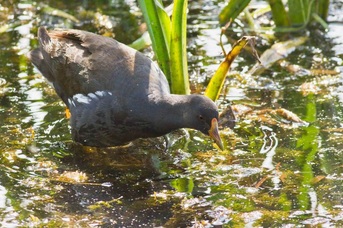 Lesser Moorhen (Gallinula Chica) Galinula angulata (Photo: Steve Powell)
Whilst I have been back in the UK for the last week of March, it would appear that everybody else is seeing newly-arrived summer visitors but Steve Powell has topped the lot. Not only did he get to see the recently-arrived and very rare visitor to Spain (less than 5 recorded to date), the Lesser Moorhen, he even manage to remember to take a couple of pictures to record this, probably, immature female of the species. No stopping Steve now as he keeps reminding us that he has also seen the presently-resident Little Crake as well. My problem is that there may now be a rush of "twitchers" to the site, so spoiling my expected visit later this week.
_Sad News - Clement the BTO Cuckoo is dead
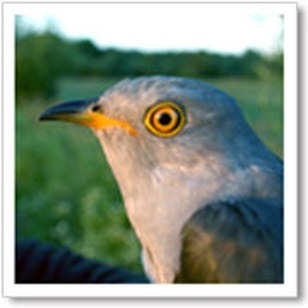
_Clement the Cuckoo
is missing in action. One of the five British Cuckoos fitted with
satellite tags by the British Trust for Ornithology (BTO), Clement's
last known location was in Cameroon, showing that he had begun his
journey back to Britain.
On 25th February 2012 the BTO received their last transmission from Clement and, even though other tagged cuckoos have gone missing only to reappear at a later date, analysis of the data by BTO scientists show that he is almost certainly dead. Tagged almost a year ago at the nature reserve adjoining the headquarters of the BTO in Thetford (Norfolk), Clement has been a star. Talked about by television news presenters, the BBC's Springwatch team and making headlines in the national newspapers, he has done a lot to bring the plight of the species (Britain has lost over half of its breeding Cuckoos) to a wide audience. Clement being tagged last summer (Phil Atkinson/BTO). _It is not just publicity that made Clement special. He was the first
British Cuckoo known to take the western migration route, crossing from
Spain instead of from Italy, making ornithological history as he did so.
From North Africa he made his way to Senegal, again becoming the first
British Cuckoo to be recorded here, before joining the other four tagged
birds in the Congo rainforest. Until this, the wintering quarters of
British Cuckoos had remained a mystery for over 100 years of migration
research.
Andy Clements, Director of the BTO, and Clement's namesake, commented: "Don't worry, it is not me the BTO have lost! Sad news though of Clement's demise, but already we have gathered extraordinary data about Cuckoo migration thanks to Clement, and all his sponsors. Let's hope his colleagues all make it back to the UK safely." Clement has left a rich legacy. He was the most sponsored of the BTO Cuckoos, bringing much-needed funds and short-term security to the Cuckoo project, and he was the most followed bird on the BTO's website, raising public awareness of the need to help this iconic species. The Cuckoo tracking project is being funded by the BBC Wildlife Fund, Essex & Suffolk Water, BTO supporters and individual sponsors. To find out more about Clement's journey, please visit the BTO Cuckoo page. BTO Thursday 22nd March 2012 For the very latest information on the remaining four Cuckoos and their present location, etc visit the following BTO web site http://www.bto.org/science/migration/tracking-studies/cuckoo-tracking/meet-cuckoos Goshawk Feeding Behaviour Report
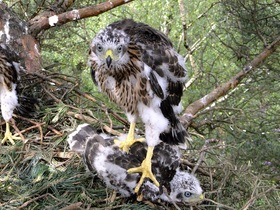
A report on the feeding behaviour of Goshawks in northern Belgium by Marieke Berkvens
My dear friend, Marieke has a love of Honey BuzzardsPernis apivorus but a passion for GoshawksAccipiter gentilis. For the past ten years she has been studying their behaviour and feeding preferences along with the neighbouring Buzzards Buteo buteo, SparrowhawksAccipiter nisis and HobbyFalco subbuteo on a private estate less than a kilometre from her home in northern Belgium. Each year, as co-ordinator, she submits a report to the local office of the estate on the various scientific studies that have taken place during the past twelve months. I am most grateful that she has sent me a copy of her recent Goshawk study, in English, so that I can share her findings with you, the readers. It is certainly fascinating and reflects the time and dedication she has put into this voluntary study of such a magnificent bird. CLICK HERE to be taken to the full report. Latest on the Bird Trapping saga
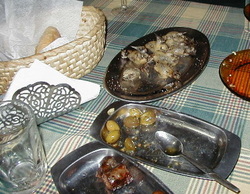 Small song birds served up as a delicacy
I have now completed the latest information on the (lack of) progress re the Bird Trapping incident down at the Rio Velez in Torre del Mar just over a fortnight ago. It is absolutely appalling the amount of obscene information about this practice that can be found on the Internet. My full report has now been published on the BLOG so CLICK HERE or link to the Axarquia Blog at the top of the page.
Late Cranes and Little Bustards
A visit to the Laguna Dulce near Campillos on 8 March confirmed that there are still still a small number (29 counted) of Cranes about plus a score or more Little Bustards. However, rather than "our" wintering Cranes, these may be birds on their way back from Morocco and just taking a breather before carrying on north. In addition, the four Ferruguinous Ducks seen over the past week or so are still present along with a rather handsome male Garganey. Well worth a visit as soon as possible and make sure that you take your telescope.
Bird Trapping Latest
My spoken Spanish not being sufficient to confront the Guadia Civil at the local office where, on my last visit, very little English was spoken, in order to clearly explain what we had seen at the Rio Velez in Torre del Mar last Sunday, I have written a long report, translated into "google" Spanish and sent along with photographs and the original English direct by email to Guardia Civil headquarters. I wonder what sort of a reply/response (if any) I will receive! I have indicated that a reply in Spanish will not be a problem for me to have translated so that I can report back any response to all readers.
Strange "Goings-on" at the Rio Velez
Following on from last Sunday's dubious activities down at the Rio Velez, I have now looked at the reason's why man traps birds and come to the conclusion that there are possibly three:
1. Scientific 2. Food 3. Pleasure and/or Commerce. I also note that, perhaps, the greatest interaction is in the killing process, whether for sport or culling to remove unwanted birds for whatever reason. With regard to last Sunday's events, the most likely explanation is that the trapper was trying to catch Goldfinches to cage as song birds. With no other visible signs apparent, it may be that the ten individual cages were, originally, only occupied by one or two Goldfinches to "call" the flock down where they could be caught in a low-level mist net. If successful, birds would be placed in the empty cages to encourage even more birds down. The process would, presumably, end when either all cages were occupied (singularly or otherwise) or the trapper had run out of time. CLICK HERE to read the full, illustrated report. Sunday 26 February and strange "Goings-on" at the Rio Velez
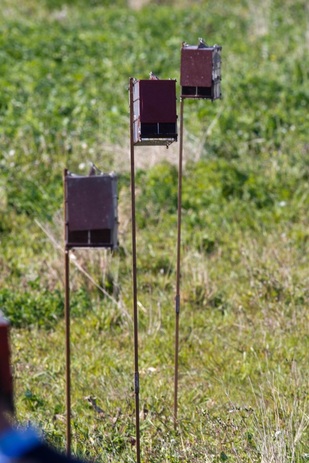 Four of the ten "Calling Cages", each containing a live Goldfinch.
Birding at the Rio Velez yesterday morning we cam across a "Bird Trapper" packing away his equipment at about 11.30am. Not a very happy person when he realised that we were taking photographs and then proceded to ask questions as to what he was going. A report on "Bird Trapping", legal and otherwise, will shorlty appear on the BLOG with a link from this page. Please allow me a few days to put the relative information together which will look at the four potential reasons why humans interact at close quarters with our avian friends.Four of the ten "Calling cages"
With limited pictures available, I will be searching the Internet to illustrate the finished short piece. However, for the yesterday morning's catalyst, I will be able to make use of those taking by Stephen - and maybe forward a selection to the local Guardia Civil. Very obliging Little Owl

Off to Alhama de Granada in search of a possible Red-knobbed Coot on Friday but, on the way, not only Azure-winged Magpies and a Southern Grey Shrike but a very obliging Little Owl that remained resting at the side of the road until I had fired off at least twenty photos. I even had a pair of Great Spotted Woodpeckers to make up for the absent Red-knobbed Coot!
Visit the BLOG for the full report. CLICK HERE Axarquia Bird Group Visit
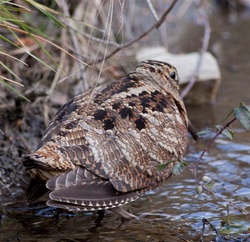
This month's visit was to the old railway track above Venta de Zafarraya and the woods of El Robledal wth over fifty birds recorded. Over 70 Choughs at the former and all the tits, Nuthatches and Short-toed Treecreepers at the latter. The retunr journey took us down to Alcaucin along the mountain track where Song Thrush, loads of Crossbills, a few Nuthatches, Woodcock and Golden Eagle were also observed. A full report can be found on the BLOG. CLICK HERE.
Great news about the Zeno's Petrel
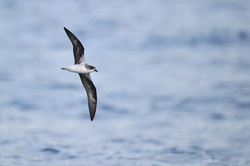
Bird Life International has just released an update on the marvellous recovery of, perhaps, Europe's rarest seabird, Zeno's Petrel Pterodroma madeira following the disastrous fire on Madeira in 2010. Repair work resulted in 45 nest being available for last year's returning breeders with eggs being laid in 43. Of these, there were 19 chicks and 16 successfully fledged. All are now waiting to see if the recovery will continue this year with even more protection against cats and rats which pridate both young and sitting adults - not to mention rats of the two-legged variety.
A full report can be found by CLICKING HERE. Wondrous management work being undertaken at the Guadalhorce Reserve in Malaga
For those of you who have visited the Guadalhorce Reserve in Malaga in recent months you will have seen the marvellous work being undertaken by a group of workers on the management of the site. Wonderful! Starting at the Sea Watch, the team have worked their way back along the track and have now actually rounded the corner towards the footbridge. In addition, lots of work has been done on other parts of the site as tracks are cleared and cleaned to give wide boundary edges, overgrown bushes and trees have been cut back and pruned to open up the area and some of the banks when I was there last Friday were being to look like sloping lawns down to the water’s edge.
Naturally, much of the vegetation will regrow over time but there are plans afoot to plant small acebuches (wild olives) on some of these slopes to provide both shelter for the smaller birds and actually act as a form of screen, which can only be for our, the birders, benefit. Indeed, the mess that was the breeding site for our Kentish Plovers which had long been a wilderness with unchecked ground cover and all sorts of rubbish deposited by high tides and winds has now been cleared and looks a marvellous achievement. No longer, hopefully, an area where rats, snakes and other vermin can predate the nests, etc but, rather, an open space which will, we all hope, result in a great breeding year for these delightful little plovers. Similarly, this is one of the best spots for finding early arrivals such as Black-eared Wheatears, Northern Wheatears and all sorts of small passerines so, again, let’s hope that we will reap the benefit this year and for many years to come. Recently, new signs have been erected reminding owners that their dogs must at all times be kept on a lead and we birders, a sign informing cyclists that hikers/walkers have priority. Hopefully, this will mean no more jumping out of the way when using the scope as some made cyclist comes racing down a track, head down and noise blaring into his ears from the latest music pod or whatever. It is too late when the resulting collision occurs with both personal injury and a very expensive repair bill for damaged equipment. The signs are in Spanish with English subtitles so let us just hope that visitors not only read the message but take note. It really is a case of saying “Well done!” to the Junta or whichever body is responsible for this work, even if it comes as a result of much pressure and persuasion by many interested bodies and individuals, far too many to mention without missing somebody out. Whilst this message has been posted on both the Blog and website, a fuller description can be found on Andy Paterson’s Spanish language blog. Yet another opportunity for we “foreigners” to practise our Spanish. (Or like me, cheating by copying and pasting onto the “google” translation page! Well, at least we get to read the message; that’s my excuse anyway.) Click HERE or enter the following blog address: http://guiri-pajarero-suelto.blogspot.com Feeling really lazy? Then CLICK HERE for a "google" translation of Andy's Spanish blog but make sure that you allow for the peculiarities of the translation; blame google NOT Andy! Want a Moroccan Birding Adventure?
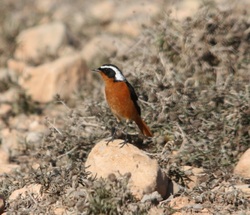 Moussier's Redstart
Read all about Dave and Gilly Elliott-Binns' recent three-week tour of Morocco and the 156 species recorded on the Blog. They certainly had great fun and some wondrous sightings. Makes me want to start planning for a similar visit. Room in the car for two more so anyone ineterested in a birding trip and sharing costs?
For the full list and places visited CLICK HERE. Cruise Visit to Central America
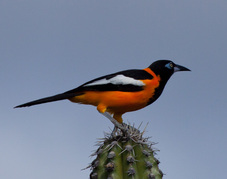
The report of my recent (January 2012) visit to visit to Central America, departing Los Angles and calling at Mexico, Guatemala and Costa Rica before transversing the Panama Canal to Aruba and then on up to Miami can be found on my alternative BLOG site, axarquiabirding.blogspot.com CLICK HERE to be transferred.
Beautiful Fuente de Piedra
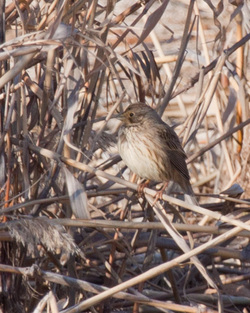
This lovely birding site never lets you down. Tuesday 31 January with thousands of Greater Flamingos, a Lesser Flamingo, lots of Teals, Black-winged Stilts, Black Redstarts and even Bluethroat, Reed Bunting and Blackcap - not to mention Zitting Cisticolas and a wealth of other birds. Driving to the west of the laguna we then had well in excess of 200 Cranes. Wow! Our vist yesterday even included the first House Martin and Willow Warblers of the year. With a visit to both the Laguna Dulce and El Torcal upon departure well over 50 species were recorded. At the latter we had Corn Buntings, Black-necked Grebes and a Marsh Harrier and finished off with Rock Bunting and Griffon Vultures at the last. A full account is now available onthe Blog (CLICK HERE).
Allen's Gallinule
An Allens's Gallinule Porphyrula alleni (formerly known as a "Lesser Gallinule")was seen at the Charca de Suarez Nature Reserve, east of Salobrena, on 25 January. Photos were taken.
Report from observer, Rafa Mateos
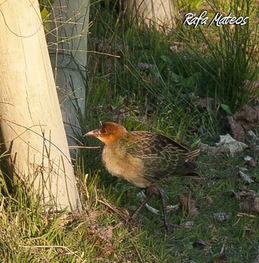 Allen's Gallinule (Porphyrula alleni)
_ Well, yesterday for me was a special day.
The photos show you the quality is absent, as are check with a 55mm and a huge cut. The 500 mm in the shop being repaired and clear when you take him out everything interesting, we're going to be, "Heh, heh, Murphy's Law." But no one can take the experience from me. I watched with binoculars, just twenty feet away, as this bird so rare in the peninsula. SEO reports that it is only seen in the Canary Islands from the South African Sahara. After consulting several bird guides, internet etc. .... with biologists from the pond, we were able to identify it. Quite a big hit! Rafa (Translated from the Spanish original - CLICK HERE) Well done, Rafa; what a marvellous sighting but I can guarantee it will be gone before the rest of us can get up to the Charca! Bob Wright Axarquia Bird Group Visit to Guadalhorce
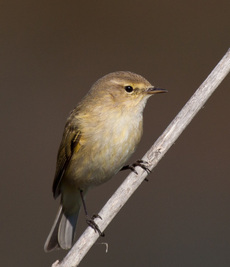 One of many Chiffchaffs to be seen.
Later than usual for the monthly vist so only a small merry band of pilgrims, five to be precise, took part on a cold but sunny start to the day on Thursday past. However, the birds were there and over 40 species recorded and, by the end of the morning, the sun was in its place and it turned out to be yet another very warm day. Lots to see and good company but (see Home page) we did make sure that we stopped for a few minuts at one of the small bonfires on the far track to warm our hands. Great to see the excellent management work presently on-going by the Junta and all augurs well for an improved breeding site for the Kentish Plovers.
Back in Spain - Birding Resumed!
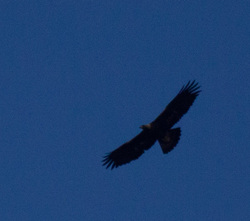 Golden Eagle high over the Alcaucin picnic site
Having been away for almost four weeks, it is always good to get home and back amongst the local avifauna. The "Welcome home" outing may not have produced huge numbers but it did feature some rather special birds including a Golden Eagle, a wintering Song Thrush and a Meadowe Pipit back on its potential breeding territory. CLICK ON the BLOG for a full report.
As far as the recent cruise went, the birding was rather disappointing with most birds seen on the Pacific coast and next to nothing once the Panama Canal had been traversed. Naturally, there were scores of Magnificent Frigate Birds, Laughing Gulls, and both Black and Turkey Vultures around the ports but very little else. Some Brown Boobies, Brown Pelicans and a Shearwater species were also recorded early on as we mocved south along the Pacific coast. A link will shorlty be provided to show a selection of the photographs once they have been downloaded and processed. "Watch this space" as they say! Christmas Birding
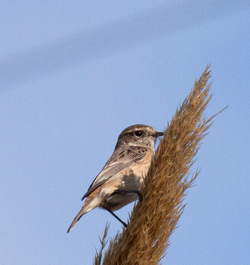 Female Stonechat (Saxicola torquatus)
Great; I managed to get down to the Rio Vlez in Torre del Mar for a couple of hours before we joined Stephen and Elena for Christmas Turkey. Steve was able to join me and we finally recorded 41 species including all three small Plovers, Dunlin, Snipe, Bluethroat, lots of Robins, Black Redstarts and Sky Larks, not to mention the scores of Goldfinches. We even had five gull species to join the Cormorant and feeding Gannets. Check out the BLOG for the full report.
Classy Charca and Fabulous Fuente
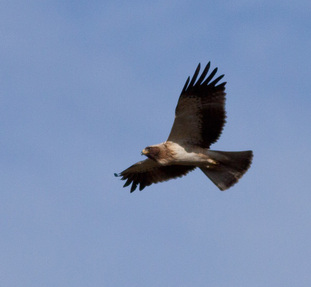 Booted Eagle (Hieraaetus pennatus)
A great evening's birding at Charca de Suarez on Wednesday past and then, yesterday, the monthly visit of the Axarquia Bird Groupproduced 56 species at Fuente de Piedra. The pick of the crop on Wednesday was probably a feeding Booted Eagle not 5 metres in front of the car plus very close views of both Snipe and Bluethroat whereas yesterday we had a Lesser Flamingo amongst the 2000 or so Greater Flamingos and at least a thousand Cranes at the other end of the laguna. Add on a large variety of ducks, Black-necked Grebe, Snipe and Stone Curlew, not to mention Bluethroat and Water Pipit, and you are ready to click on to the BLOGfor a full, illustrated report of both.
A Visit to the UK's Rutland Water
 Marsh Tit
Rutland Water may be only a bare ten miles (16 km) from our little Stamford house but on visiting the site this morning I discovered frosty ground, ice on the puddles and a very blustery and cold wind. Nevertheless, by the time I returned for a warm lunch just after 1pm, I had managed to record 50 species including a dozen ducks. Specials included Goldeneye, Goosander and Pintail but also my first Redwings of the winter and a rather magnificent Buzzard. Tits and finches come regularly in Spain but a pair of Marsh Tits and a dozen Long-tailed Tits are always welcome - as is the illusive Dunnock and the local Pied Wagtails. The full report can be found on the BLOG.
Red-throated Diver and late House Martin
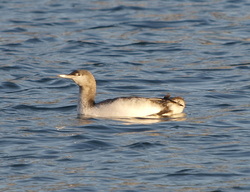 Red-throated Diver at Fuengirola
I don't know; I go away for a few days and everything suddenly turns up on the proverbial doorstep! First an email from Andy Paterson yestrday to inform me that a Red-throated Diver has been at Fuengirola harbour for at least the past four days and then, no sooner read, and I received an email from Steve Powell to tell me that, not only are the Bluethroat, Water Pipit and Snipe still hanging around at the Charca de Suarez reserve on the outskirts of Motril, but that they actually saw a very late House Martin. If it is an over-wintering bird, it is rather north of its cousins, the Barn Swallows, that have been known to over-winter in the Cadiz area.
ABS meeting and Cranes
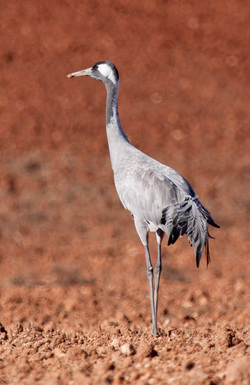
Whereas there only a few distant Cranes to be seen when the Andalucia Bird Society met at Laguna Dulce on Saturday 26 November, a subsequent visit to the main laguna at Fuente de Piedra certainly produced the goods. The main flock held over 300 birds with a further score or more at the shallow end of the laguna whilst, on the far side during the return journey home, a another 150+ were found. The last were much closer to the road so better views were able to be obtained.
Meanwhile, back at Laguna Dulce, the mist had lifted before we left the main group of members and there were plenty of ducks to be see, especially Red-crested Pochards and White-headed Ducks. As usual, a full report can be found by visiting the BLOG. Axarquia Bird Group Visit
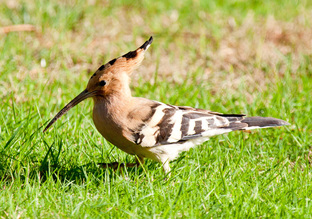
This month's visit took the Axarquia Bird Group to the Rio Velez near Torred del Mar yesterday morning, 23 November, followed by the wooded picnic site on the mountain above Alcaucin and then on to Venta de Zafarraya for a Menu del Dia nd a short wlk along the old railway track to the tunnel and back before dispersing and making our way home. A great day's birding in beautiful weather with a total of over 50 species recorded. As always, turn to the BLOG for a full, illustrated report. Next month we are back to our usual third Thursday and will be looking for Cranes at Fuente de Piedra.
Quinta do Lago, Portugal
 Caspian Terns (Sterna caspia) in winter plumage
Just back from a week at Quinta do Lago, Portugal where, to my great delight, our villa was in the centre of the Ria Formosa Estuary National Park with easy access to many great birding sites.
Stopping at Fuente de Piedra on the outward journey and on a very wet return last Saturday in the Donana National Park at both El Rocio and the Dehesa de Abajo (where it very convenienmtly remained dry for our short stays) we finished the week with a total of 95 species including two special surprises, a small flock of Caspian Terns at Ludo and a large flock of Common Waxbills within a thousand metres of our villa. Even better, a chance to take a few photographs. Lots opf ducks both on site and during our stop at the lake of Abajo including Marbled Teal, Ferruguinous Duck, Tufted Duck, Wigeon and Red-crested Pochard. Purple Swamphens were very common and it is always lovely to see the magnificent Marsh Harriers, especially the males. To also see Hen Harrier, Spanish Imperial Eagle and loads of Buzzards was an additional bonus. To our friend and guest, Pauline, the attraction of scores of Azure-winged Magpies, icluding a large number that readily came to feed in the small garden, was a further pleasure.Part of the Donana Delight
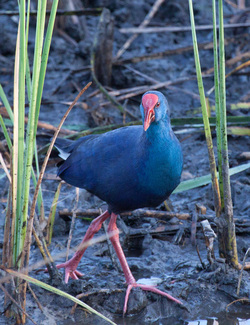
Only a few days now since returning from four fabulous days in the Donana National Park including the Odiel Marshes. By the time we returned, we had clocked up 111 species including such diverse birds as Black Stork, Spanish Imperial Eagle and Bluethroat. Other than Dupont's, we saw the remaining six members of the Lark family. However, as last year, theer was no Black-shouldered Kite to be seen but, on th eother hand, there were scores of Marsh Harriers, Buzzards and Kestrels - not to mention the rather lovely Hen Harriers and Peregrine Falcons. A full report and Checklist appears on the BLOG.
Guadalquivir Estuary
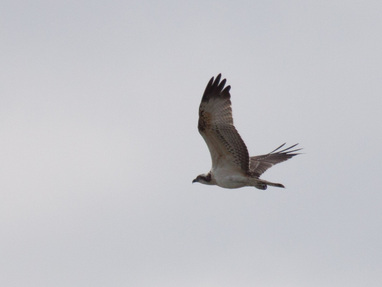
Life goes on and lots more super birding to be had and seen. Visiting the lower reaches of the Rio Guadalquivir on Saturday 22 October produced over 80 species including large numbers of both Black Storks and Spoonbills, not to mention all the waders. Then, when you consider the Marsh Harriers, Opsreys, Red Kites and a Pergrine, you begin to realise what a fabulous area this is for all birders, both the experienced and those new to our fascinating birding past-time.
The previous day (very windy) the sierras near Tarifa produced a soaring group of 200 plus Griffon Vultures in which there were also a few Short-toed Eagles and at least a couple of Black Vultures. La Janda was, as ever, an amazing site. Hundreds of White Storks and Glossy Ibis plus many Marsh Harriers and some very handsome Hen Harriers. Since returning, I have also been able to spend a morning at the Guadalhorce in Malaga and a day in the mountains visiting both the old railway track at Venta de Zafarraya and the picnic sites above Alcaucin. Peregrine Falcon, Choughs, Blue Rock Thrushes and Black Wheatears at the former and many Crossbills and Jays at the later. As always, full reports ad photographs found on the BLOG. I even had dozens of Azure-winged Magpies in the late afternoon. 3 Days in Norfolk, UK
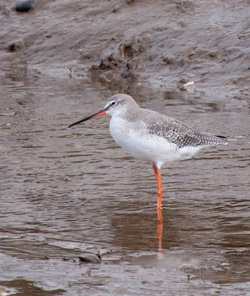
Just back from a short break in the UK which included three days in north Norfolk, taking in such wonderful sites as Titchwell Marshes, Cley Marshes and those wonderfully special "Staithes" at Brancaster and Morston. The latter were especialy good when visiting on a low tide so able to get up close to Curlews, Spotted Redshanks, Common Redshanks and Turnstones - not to mention both Black-headed andHerring Gulls. A full, illustrated reprot has now been [popsted on the alternative BLOG at axarquiabirder.blogspot.com.
CLICK HERE to be re-directed. CYPRUS HAS JUST GONE FROM BAD TO WORSE
I thought that the last report from Bird Life International was bad with regard to the illegal trapping and selling of small song birds in Cyprus but how things have greatly deteriorated with catastrophic results. The latest update from the voluntary monitoring stations is that from 1st September this year until last Sunday (9 October) at least 866,905 birds had been caught in either illegal mist nets or on lime sticks. Asthe report states, the intention is to catch mainly Blackcaps and small song birds for the restaurant table but anything goes and recent deaths have included Bee-eaters, Shrikes, Nightjars, Flycatchers and even small Owls. And what is being done about this barbaric trade? Nothing it would appear; neither the prevention of the trapping nor the apprehending of the culprits or even the monitoring and censporship of the dispicable restaurants and cafes that willingly participating in this illegal trade. The original estimate for this Autmn's slaughter was 90,000 but, as you can see from the above, this figure has been surpassed ten times over. The government would appear to be either ignoring or acquiescing to these morons which makes you wonder just what can be done to bring this seedy trade to the notice of the greater public. If only you could visit one or more of these restaurants and leave a suitable message - I leave you to devise what might be an appropriate message.
To read the latest report, click on or copy the following URL into your browser: http://www.birdlife.org/community/2011/10/update-over-866000-birds-slaughtered-so-far-this-autumn-in-cyprus-sign-the-petition-to-stop-this-now/ Iconic Birds of Andalucia
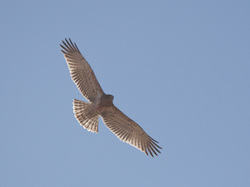
I am pleased to inform readers that the report on the "Iconic Birds of Andalcia"has now been completed and published. As already stated, the overall winner was the Bee-eater closely followed by Hoopoe. The iconic raptor was the Short-toed Eagle.
The full report, including tables and photos, can be accessed by CLICKING HERE. However, now that I have had time to review the decision, including my own votes, and ponder on the outcome, perhaps I might put forward a different scenario. I am sure that it is all too easy to "forget" those everyday birds that, whilst new to we relative newcomers from the UK, are, nevertheless, quite iconic to this part of Europe. How about this as an alternative suggestion as we await a new vote in 2012: Top Five Residents (not in order): Cattle Egret; Hoopoe; Thekla Lark; Stonechat and Serin Top Five Visitors (Summer or Winter) - and again, not in order: Short-toed Eagle; Bee-eater; Red-rumped Swallow; Southern Grey Shrike and Woodchat Shrike. After all, these are probably the birds that we birders see on a regular basis throughtout the year/season without having to make special journeys to near or far-off places. It's going to be the Bee-eater
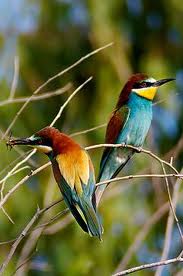
The results are in and the calculations completed. The winner of the open particiaption to find the "Iconic Bird of Andalucia" is the Bee-eater Merops apiaster closely followed by the HoopoeUpupa epops and with the Sardinian WarblerSylvia melanocephala in third place. The analysis is now complete and the report written; it only remains to be uploaded with appropriate photographs - so watch this space for further news. All being well, the link will be published within the next two days.
Rock Thrushes and Wheatears at Sierra Loja

Five of us up to the Sierra Loja on Thursday 22 September to search, successfully, for both Rock Thrushes and Northern Wheaters. A total of 33 birds, including Short-toed Eagle, Booted Eagle, Little Owl and Black Wheatear recorded during the mornming with a full, illustrated, report now available on the BLOG. (Click HERE to be re-directed)
Fuente de Piedra - 21 September
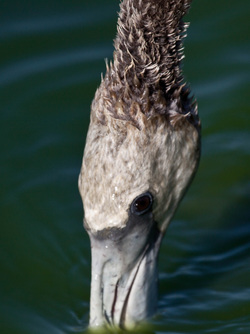
Just like all youngsters; they start to grow and then want their own special hair style! No end of juvenile Greater Flamingos about plus some Lapwings , Snipe and Shovelers. But five White Storks? That was a bit of a surprise today. Follow th elink to the BLOG to read the full report of this mornming's vist which recorded 45 species.
Five Days in Tarifa Area (1 - 5 September)
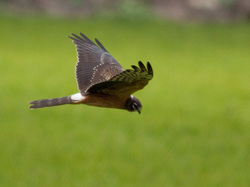
Just back from five days based in barbate with Steve Daly and family. First night on Palmones estuary with Marieke then some serious birding with lots of raptors and many waders, Egret family species, etc. Even with rain on the first two dyas we still managed to record 96 species so now the fun and games start as I download the photos and write-up the BLOG.
Autumn Migration now well underway
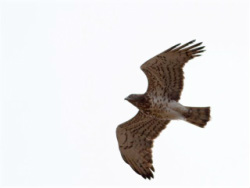
Its all happening as we approach the start of September. Swifts are moving through, te Bee-eaters seem to be very bust and, at last, we are now seeing a steady stream, albeit in small numbers as yet, of Honey Buzzards moving south over the house. Even the Short-toes Eagles seem to be having a last-minute feast befre they, too, set off for their winter homes.
Rutland Water Bird Fair
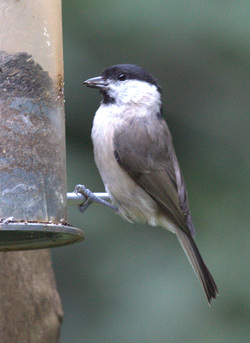
Lots of fun and people to see at my local UK birding patch which has just played host to the 23rd International Birding Fair. My version can be found on the BLOG plus an account of yesterday's (Tuesday 23 August) morning visit where over 50 species were recorded, including the local Osprey pair with their recently fledged three youngsters. Also great to see both Kingfisher and Sparrowhawk at close quarters and, feeding with the tits and finches, a rather lovely Marsh Tit.
Back home to casa Collado later today and then I can see what is happening down at the Guadalhorce in Malaga where, hopefully, there has been a mass return of waders and passing raptors. Time will tell. Laguna Dulce is the place to be at the moment
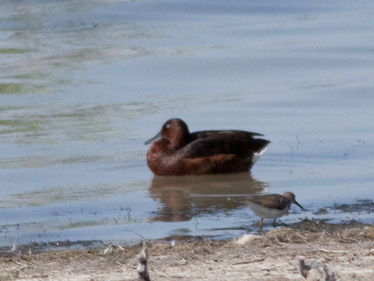
The waters are gradually receding at the Laguna Dulce just east of Campillos but know shortage of birds - in addition to the thousands of Coots. Two weeks ago a Water Rail and in the last few days, still resident, a range of ducks including Ferruginous, Shelduck, Teal, Red-crested Pochard, Common Pochard, Shoveler and Gadwall. Add on Purple Swamphen, all three Grebes and Red-knobbed Coot, and not forgetting Wood, Green and Common Sandpiper, and this is definitely a water to visit at the moment.
Five Days in the Serania de Ronda
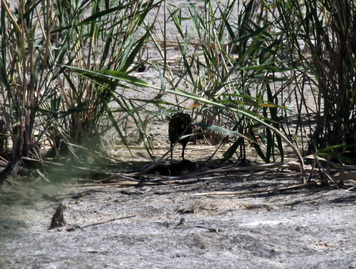
Visit the BLOG to see the full report on the 70+ birds seen during the five-day visit including many at Laguna Dulce and Fuente de Piedra on the return journey home. Great, almost unintentional, birding with many signs that there is, presently, a lot of movement being undertaken as our birds start to both depart and arrive. The sight of a Water Rail at the Laguna Dulce was particularly pleasing. And what about those strange little "brown jobs" up at the pass as we approached Grazamela? Never seen th elike before and not recorded in the Collins Guide. So, by common ascent, either well-moulted Adults or juvenile Rock Buntings. Again, more photos on the BLOG.
Top Birders in Andalucia
What a privilege! Not only many of my fellow birders from the Axarquia Bird Group but some of the most respected birders in Andalucia, including Andy Paterson, Steve Daly, Mick Richardson and Dave Elliott-Binns graced us with their presence at our Golden Wedding Anniversary gathering last Saturday afternoon. Great fun as so many had not seen each other for many months, if not years; so much to discuss and reminisce over. To think that these special friends were willing to travel up to seven hours each way to visit us makes me feel very humble. A special thank you to you all; your attendance helped make our day such a memorable experience.
Iconic Birds of Andalusia
Refer to the BLOG for the latest bit of "humorous" research as I try and discover what might be the Iconic Birds of Andalusia. One or more than one, which bird(s) do you, the reader, associate with this southern part of Spain?
Latest BTO Report
Latest BTO report tells of 5 captured male Cuckoos who have had tracking devices affixed before their release to check migratorary routes. The birds, named Clement, Martin, Lyster, Kasper and Chris, can be followed on the BTO site or by CLICKING HERE for same plus more details of exercise.
Two Maltese imprisoned for illegal shooting of White Storks
Here's some good news just received by email. Following my recent report on bird persecusion as reported by Birdlife International, now comes a report from Malta that following the recent illegal slaughter of White Storks two ment have been fined and imprisoned. At last, some thing seems to being down on our small Mediterranean island!
Maltese law courts yesterday sentenced a hunter to two years imprisonment and a €9,000 fine, and another to one year imprisonment and a €5000 fine, for the targeting of White Storks on the 18th May this year. All hunting licenses were permanently revoked for both individuals. Of a flock of 200 White Storks which first arrived in Malta, less than half were confirmed as leaving the island safely. READ FULL article by clicking here Fuente de Piedra & Lesser Flamingos
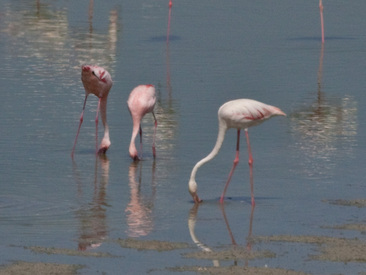 Two Lesser Flamingos with a Greater Flamingo
Witht he Andalucia Bird Society (ABS) on Saturday 9 July for a couple of ours before the AGM. Reasonable selection of birds including the usual thousands of Greater Flamingos but also, newly-arrived, a pair of Lesser Flamingos at close quarters. That and the the juvenile Great Spotted Cuckoo made the visit, in very hot weather, well worth-while.
Following on to the Launa Dulce three of us also picked up Red-crested Pochard and all three Grebe apecies, not to mention a Short-toed Eagle and White-headed Duck. Don't look elsewhere; it's here in Spain!
The latest report from Birdlife International tells of the deplorable state of some European countries in respect of treatment to birds against European-wide law. If, like me, you assume that this greatly refers to countries such as Malta and Cyprus with their shooting attitude (if it flies, shoot it down), the French, who seem to always find a way of looking the other way and produce all sorts of excuses when they are called to account, well then, think again, because it would appear that Spain is still one of the worst offenders in Europe when it come to their national attitude towards avian law.
The report concludes with the worst three offences, two of which apply to the whole of Eurpoe:
To read the full report in all its deplorable horror, visit Birdline by CLICKING HERE. Away, away from home
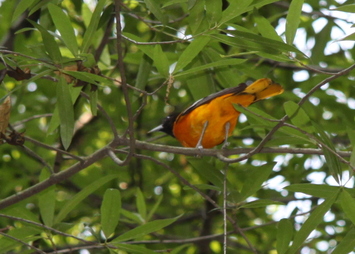
Now back after nearly five weeks absence whilst Jenny and I took in a three-day visit to New York before returning to Southampton, England aboard the new Ocean liner, Queen Mary II in between time both before and after with family and friends. Not a lot of birding so desperate to get cracking once again. Whilst in New York we did see many American Robins, a Baltimore Oriole and a couple of Mourning Doves but the main species on view were European House Sparrows, Rock Doves and Common Starlings! The Atlantic crossing produced many Greater Shearwaters followed by Gannets as neared the European coastline.
Meanwhile, nearer to home, Stephen Powell has been busy with his new camera and a lovely shot of a Spotted Flycatcher peeping out from behind the leaves on hios terrace has been produced on the Home page. However, now that we are back it is good to see that the Short-toes Eagles are still paying their daily visit to our mountain whilst, all around us, the Barn Swallows and Red-rumped Swallows seem to have increased in numbers and are more then grateful that we have, at last, incovered the swimming pool. White Storks

My latest blog (CLICK HERE) includes a report from BirdLife concerning the mass slaughter of White Storks taking refuge from the bad weather on the Mediterranean island of Malta. Absolute madness and it leaves you wondering what, if anything, will be done to bring this unnecessary, and illegal, slaughter to an end.
Andalucia Bird Society visit to Seville Province
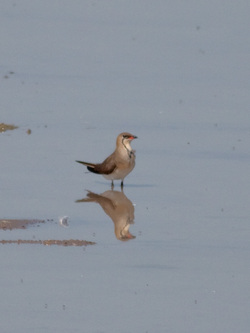
Twenty-four members tookpart in the May field Visit to the lakes to the north of Osuna followed by an afternoon visit tio the steppes to the west to try and locate th eillusive Great Bustard, not to mention both Rollers and Lesser Kestrels. Add on Collared Pratincoles, Montagu's Harriers, Buzzard, Great Reed Warbler and many more, a combined total of almost 80 species was recorded during th eday, and you will get a flavour of th evisit. For my experience, follow the blog on page 5 (CLICK HERE) or visit the Society's website.
Axarquia Bird Group visit to Sierra Loja
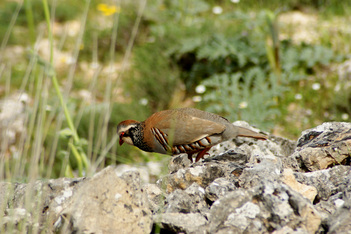
Thursday's visit by the Axarquia Bird Group to the Sierra Loja in Granada Province was undertaken in good weather (and good company) and resulted in almost 50 species being recorded. Whilst we only had the most fleeting glimpse of a Rock Thrush, we did all have good views of both Golden and Booted Eagles plus an adult Little Owl and the resident Eagle Owl's chick looking down on us from its nest ledge. Also, lots of Black-eared Wheatears and much more. A full account can be seen on the blog.
One of many Red-legged Partridges seen on the mountain (Photo: Gerry Collins) Making Contact with the Axarquia Birder
Wondering where to go birding? Need to get in touch, pass a comment on the site and/or blog, rather not use my email address?
I have a "Twitter" account and, I think, it should now be accessible from the Front Page of the site. I will only know when you contact me or send an email to tell me that it is not accessible, etc! As his is a "living" site, would it be of any interest to readers if I added pages detailing some of the local/favourite birding sites that I visit? Just let me know and I will see what I can do. Bob Wright Great Birding Week-end
Non-stop birding from Friday to Monday; four great days with three spent at the Guadalhorce, Malaga and the third day in the mountains above Casa Collado including Venta de Zafarraya and Alcaucin. The first day with Stephen Powell from Frigiliana and the last with Andy Paterson. In between, I collected our Belgian friend, Marieke Berkvens, so that we could show her the delights of this special area before her return home north of Antwerp. Many, many birds seen and all now posted on the blog. A very special treat was coming across a Red-necked Nightjar happily resting on the track just before Casa Collado as we made our way home on Saturday night. What a cracking, very clos, view of this magnificent bird. If only I had taken a camera out with me!
Highest monthly total in Spain
It was wet this morning so no chance of an early visit to the Rio Velez in the hope of seeing passing Collared Pratincoles. Therefore, it looked like a highest ever monthly total since moving to Spain over eight years ago with a total of 161 species. Amazing when I think of the birds I have not seen this month. However, on taking Jenny to her acupuncturist this afternnon, the sun came out for brief interludes and then I heard my first Golden Oriole of the year. Much scrutenising the Eucalyptist trees below but, after a few minutes, the birds were found. Two gorgeous males in full view. The birds stayed around, calling, and offered further views. And I forgot to take my camera and, at least on the first occasion, I could have had a great, if distant, shot. So, the final total for April, unless something suddenly decides to visit the terrace, looks like be a marvellous 162.
First Roller for Casa Collado, Lake Vinuela
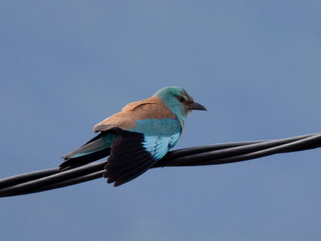 Roller (Coracius garulus)
My first Roller (Coracius garrulus) was a solitary individual seen on the eastern growing fields next to the Rio Velez in April 2004. Since then I have seen two further birds in Malaga Province, both at the Guadalhorce reserve in Malaga. This is a bird that is regularly seen in Extremadura and the Cota Donana and, whilst there are regular sightings in Malaga Province, it is somewhat of a rarity for most. The individual seen on an electricity cable in the company of a pair of Serin in the early evening of Saturday 23 April was trying to dry itself out in the warm sunshine following torrential rain all afternoon. Was it simply passing through the area and got too wet to carry on? Is it likely to remain in the area and become part of the established avifauna? Only time and subsequent sightings will tell.
Wood Sandpipers
Marsh Sandpipers may have suddenly appeared but this month, if not this year, would appear to be time for seeing Wood Sandpipers. Rather than the occasional sighting, the birds have been not only cropping up in a variety of sites from Cabo de Gata to the Donana but also in great numbers with counts reaching into double figures and one count of 23 individuals. Not seen a Wood Sndpiper yet? Then you need to hurry on down to either the Guadalhorce in Malaga or, better still, pop up to Fuente de Piedra.
Marsh Sandpipers
First Andy Paterson at Fuente de Piedra last Friday and now, yesterday, Mick Richardson with a pair of Marsh Sandpipers at the same site. Indeed, Mick went one better and even picked up another specimen at the Laguna Herrera near Antequera. Again, more details can be found on "Malaga Sightings".
Axarquia Bird Group visit to Cota Donana
A total of 16 of us spent three nights in the Donana National Park and nearby Odiel Marshes from the 5th to 8th April during which, as a group, 155 species were recorded. Indeed, one couple stayed on the extra night and then managed to pick up a pair of Rollers. A full report can be found on the blog.
Andalucia Bird Society March visit
This month's visit, organised by Franky Hair took 15 members to the lagunas near Campillos, centred on the Laguna Dulce, and then on to Olvera in Cadiz Province. A great day's birding in very good weather and a final species tally well in excess of 50 birds. Lots of raptors including Griffon Vulture, Short-toed Eagle, Booted Eagle, Red Kite, Sparrowhawk, Kestrel and Lesser Kestrel plus a range of the usual ducks but also including both Tufted Duck and Red-crested Pochard. All three grebes were noted and we even had a lone Little Bustard. A full report of the day is on the blog (CLICK HERE) and then, if a member, prepare yourself for next month's visit to the Sierra Loja with, hopefully, Rock Thrush and lots of butterflies and flowers, including many orchids.
Axarquia Bird Group March Visit
Despite windy conditions, but lovely sunshine, the six present enjoyed a good morning's birding totalling some 44 species. Woodchat Shrikes, Whiskered Tern, Turnstone, Whimbrel and Yellow Wagtail (Blue-headed Iberian race) were the main attractions. Full report on blog.
Salobrena Sightings
Gerry Collins has just forward a couple of pictures of a Night Heron Martinete Comun (Nycticorax nycticorax) at La Charca + White Stork (Ciguena blanca) in La Vega Salobrena. seen this week at the Charca de Suarez reserve near Motril whilst, closer to home in the the Vega at Salobrena, he had a cracking view of a White Stork Ciguena Blanca (Ciconia ciconia).
Axarquia Bird Group visit to Guadalhorce
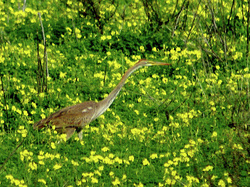
After the previous heavy rain, the lucky/optimistic/enthusiastic 7 who duly turned up where rewarded with 45 species, including early Barn Swallows and House Martins plus Booted Eagle and Marsh Harriers on the reserve and at least 15 Common Scoter and 10 Whimbrel off the beach. Even a rather lovely Purple Heron as we departed. See "Blog" for full report.
With so many absent due to the poor weather, we shall return again in March. Three Days in Jaen Province
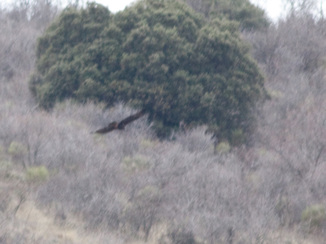 One of many Golden Eagles ( Aquila chrysaetos) seen during our visit.
Just back from 3 days in Jaen Province with the Andalucia Bird Society. Our monthly filed visit was last Saturday followed by two-days private birding in the neighbouring sierras with a group of ten. All very interesting but bitterly cold and some light snow on the Sunday! However, a total of 12 raptors, 7 corvids and all 3 woodpeckers during the stay; can't be bad! A full report will be published on the Blog within the next day.
Christmas - New Year Birding
First of all, I trust readers that you all had a peaceful Christmas and I wish you a happy, healthy and successful Birding New Year.
There seems to have been plenty of birding over the festive season with vists to such sites as the Guadalhorce in Malaga, Fuente de Piedra, the Rio Velez in Torre del Mar and the mountains and woods near Zafarraya. All have produced some good results including a range of raptors and grebes at the Guadalhorce; Cranes, Flamingos, Little Bustards and Stone Curlews at Fuente de Piedra; water birds including both egrets, Black-winged Stilts and Green Sandpiper at the Rio Velez and Jays, tits, Crossbills and Azure-winged Magpies in the Zafarraya area. Details of all can be found n the blog (see above) or CLICK HERE. Andalucia Bird Society (ABS) visit to Guadalhorce, Malaga - 11 Deceber 2010

Yesterday (11 December) saw 17 of us at the Guadalhorce for the monthly field visit. The end result was a total of at least 55 species including 7 raptors and all three resident grebes. A full report is now available on the blog (page 5) or CLICK HERE.
Axarquia Bird Group Visit - 25 November 2010

This month's visit was to Huerta Tajor in Granada Province to seek out the wintering population of Stone Curlew and Little Bustard. Whilst we found in excess of 200 Stone Curlews and an accompanying flock of over 100 Lapwing, we were unsuccessful with our search for the Little Bustards. However, we did see scores of White Wagtails and both Meadow and Water Pipit. See blog for full report. Next month's visit will to be the Guadalhorce in Malaga on a date to be announced; need to avoid the Andalucian Bird Society's overnight visit to the Cazorla area in Jaen Province.
UK and Belgium/Holland Visit (29 October - 21 November)

Just over three weeks away from Casa Collado including driving time for the return journey but, nevertheless, some very good birding. In addition to the birds seen en route, we were also able to make visits to Rutland Water, Norfolk (Titchwell Marshes and Cley), Titchfield Haven on Southampton Water and then a full day exploring the polders of Zeeland at the mouth of the River Scheldt before departing for home after a morning's walk in the woods and marshes at Wuustwezel in northern Belgium. For a full account of all bar the Spanish elements of the trip (they are recorded on the blog which can be accessed from the link at the top of the page) the CLICK HERE.
No doubt, some of the more memorable sightings included Grey Phalarope, White-fronted Geese, Snow Bunting hundreds of Curlews. Spain to Stamford, Lincolnshire
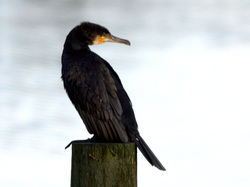
Interesting three-day journey home via Madrid, Burgos, Iran (Nature reserve), Le Mans, Calais and Dover. Lots of birds seen including 5 different raptors north of Madrid before the wet stuff set in. Irun was interesting for a first visit and, providing the return journey coincides with daylight hours, we will be calling in again and, with lots of luck, might just see the arrival of the first Divers. Meanwhile, I feel a call to visit Rutland Water, Titchwell in Norfolk and Titchfield Haven near Portsmouth might be high on the agenda! A short blog re the above journey has been posted (CLICK HERE) for more details.
For Sale:
Two items at the moment:
1. I have a Kowa straight scope including eye piece for sale. Belongs to my birding friend (he has replaced with same company) and wants offers in the region of £100. He also has an addition eye piece for sale but not separately. Contact me for further details. 2. Now that I live in Spain, I have no need for my time-share. I have 8,500 points with "Diamond Resorts" which will exchange from 2 - 10 weeks per year depending upon size of apartment wishing to swap into. No exchange fee if using one of Diamond's many resorts. With over 20 years use I have already had my money's worth so willing to give away for the cost of transferring ownership, about £400. Cost to buy would be in the region of £10,000 plus. A bargain waiting for somebody! Donana National Park Visit - 16 to 23 October
With the lady wife and Eric and Pat Lyon we enjoyed eight glorious days of, mainly, birding in the Donana plus the outward and return journey visit to the Laguna Herrera where, on both occasions, Ortolan Buntings were seen and photographed. When the list of birds was finally tallied, I had a magnificent 129 species including Spanish Imperial Eagle, Little Owl, Black Stork, Glossy Ibis, Spoonbill, Water Rail, Spotted Redshank, Kingfisher, Green Woodpecker and Ring Ouzel amonmgst others. Visit the blog (page 7) for a full account.
Autumn Field Visits:
Whilst very pleasant weather, the September visit to the Charca de Suarez reserve on the outskirts of Motril was rather disappointing in terms of species seen. However, we did have 3 Kingfishers and 7 Purple Swamphens. A full report is in the blog immediately after teh report of my six-day vist to Tarifa and the Donana National Park. The dates for the final two months of the year have now been fixed and all that remains is to agree the venues. At present, the feeling is Malaga's Guadalhorce in November and Fuente de Piedra for the Cranes in December. However, if the Stone Curlews and Little Bustards are back in the Loja area then we might be better visiting this site, and possibly the Sierra de Loja in November and put off the Guadalhorce visit until January. Early warning and request for interest: We are considering a Spring visit to the Donana National Park in early April with a two-day stay at a very comfortable hostal in El Rocio. This would give time for the Donana on both outward and return visits plus a visit to the Odiel marshes. Sharing cars and fuel costs, I think we can keep the overall cost very low. Indeed, with sufficient interest, I think I can probably get double rooms for less than €50 per night. Single rooms would be about €40; both, hopefully, including breakfast. As always, full details will be sent out to all on the Axarquia Bird Group mailing list and "non-members" are most welcome to get in touch via email for inclusion on same. Email: [email protected] Bob Wright Latest mystery from Salobrena!
Friend Gerry Collins managed to capture the following two pictures whilst walking in the vega at Salobrena. I'm still waiting for Gerry to give me some idea as to size but the beak suggest some sort of Chat or Warbler. However, the very white rump immediately suggests a member of the Wheatear family - but then the beak is too small and the bird itself suggests something much smaller. All suggestions welcomed. Perhaps Salobrena is suffering from some sort of polluted run-off from the Sierras and is producing its own mutant strains of whatever! However, that is into fantasy land and, when identified, I am sure that we are all going to exclaim, "Of course it is!"
Problem solved; a juvenile female Black-eared Wheatear.
Slender-billed Curlew (Zarapito Fino Numenius tenuirostris)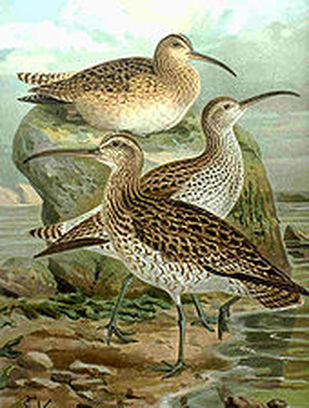
Join in the great hunt for the Slender-billed Curlew which, according to many if not most, may now be extinct. The bird's normal migration route is from Siberia to Morocco so all birders in our part, and suitable neighbouring areas, should keep their eyes open for this very illusive wader - just in case. Smaller than a Curlew and more Whimbrel size, the adjoining reference chart may be of some help.
For further information visit the specialist web site at: www.slenderbilledcurlew.net Caribbean Visit
For those interested in the birds of the Caribbean, I have now completed a report including birds seen and a selection of photographs.
CLICK here Annual Birds Total for Spain
Now that the Annual Report for the Axarquia Bird Group has been completed and published (see opposite) I have found time to look at my personal totals for the past year. For the third year running I have exceeded 200 species with a new (Spanish) high of 223 birds. When I add the 13 other species recorded back in the UK, the total number of species for 2009 reaches 236 birds. (NOTE: The UK figure is merely the birds NOT recorded in Spain, not the total number of birds seen in the UK!) These figures compare with the 193 birds seen in Spain in 2008 with a corresponding number of 14 seen in the UK giving a total for that year of 207 birds.
The numbers of birds seen for the seven years is as follows and very much reflects the increasing amount of time that I have been able to devote to birding in recent years plus far more care with recording: 2009: 223 + 13 Total 236 2008: 193 + 14 207 2007: 201 2006: 158 2005: 122 2004: 110 2003: 51 In looking at the detail, two birds, Bullfinch (Camachuelo) Pyrrhula pyrrhula and Common Starling (Estornino Pinto) Sturnus vulgaris were actually seen in Spain whereas in previous years they would only have been recorded back in the UK. Similarly, an additional 46 species were recorded in 2009 compared with the previous year including 7 raptors and 7 warblers. On the other hand, 15 of the birds recorded in 2008 were not recorded last year. Surprisingly, this group included Subalpine Warbler (Carruca Carrasquena) Sylvia cantillans and Penduline Tit (Pajaro Moscon) Rem. Looking back, perhaps the best sightings were of the immature Ruppell's Vulture seen over Tarifa in September and the first sightings of a Great Bustard near Osuna in early November. Conversely, disappointments included not recording Barbary Partridge (Perdiz Moruna) Alectoris barbara during my stay at Jews Gate, Gibraltar in April, either White-rumped (Vencejo Cafre) Apus caffer or Little Swift (Vencejo Moro) Apus affinis at Bolonia or a Bonelli's Eagle (Aguila-azor Perdicera) Hieraaetus fasciatus. CLICK HERE to view my complete list for 2009 |
"Malaga Birds"

Our new bi-monthly e-magazine Malaga Birds is now availbe for free emailing to anyone interested. The First Issue was produced in November 2012 and the second in January 2013 and future issues will follow, all being well, on a regular two-monthly basis. Members of the Axarquia Bird Group will be sent thier copy automatically and other readers can obtain a free copy be simply contacting me at my email address: [email protected].
Central America Visit
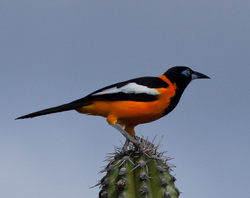
CLICK HERE to see a report of my January 2012 cruise calling in at Mexico, Guatemala, Costa Rica, Panama Canal and Ariba.
2009 Bird Report
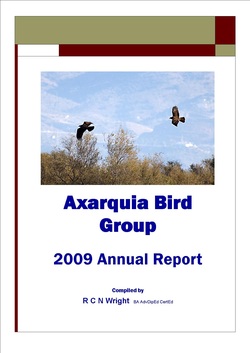
Summer Migration DatesI have compiled a list of arrival and departure dates for seven popular summer visitors. Whilst I am able to show the average dates for the past five years, as yet I am unable to include the table with the specific dates for each year per species. When I can find out how to paste a "table" the document will be completed - and can be updated on an annual basis.
For more information and details CLICK HERE. |
| Birding Axarquia and Photograph Album |
|

